Investigating Design Strategies for Classroom-based Augmented Reality Learning Experiences
Doctoral Thesis, IIT Bombay, July 2017 - July 2022
The Indian schools in Tier 2 and Tier 3 cities involve technology-driven classrooms. However, learning the subjects such as (but not limited to) Mathematics, Science, and History that include abstract concepts often becomes challenging for students due to the requirement of visualizing skills, a lack of learner-content control, and frequent disengagement. This leads to the requirement of a student-centered techno-pedagogical tool. Recent works have indicated Augmented Reality (AR) to be one of the emerging technologies for student-centered learning that superimposes computer-generated virtual objects onto the real world in real-time. Moreover, the ubiquity of mobile phones has led to increased integration of AR and mobile learning. In the context of Indian schools, this technology is still being explored and is yet to be added to the benefits of classroom teaching. Hence, there is a need to identify the ways by which AR technology can be designed and used in Indian schools to provide an interactive, immersive, and enhanced learning experience. To create such a classroom-based Augmented Reality Learning Experience (ARLE), the potential design strategies have to be identified and applied.
This dissertation advances our understanding of these problems in two ways: (1) to characterize the design strategies of an ARLE incorporating the three dimensions of learning i.e. content, incentive, and interaction (Illeris, 2003), and (2) to apply the identified design strategies in creating an ARLE. We have used Design Based Research (DBR) as the overarching research approach to design and iterate on the potential solution. DBR is a research methodology that aims at the development of educational interventions or learning environments through iterative cycles of analysis and exploration, design and development, and evaluation and reflection. We carried out seven research studies (N = 235) using a mixed-method approach in two cycles of DBR.
To address the first research goal i.e. to understand the required design strategies for a classroom-based ARLE, along with a literature review, three studies were conducted to iteratively identify the design strategies. Initially, the expectations from students, teachers, and parents of having an ARLE in the classroom were outlined (Study 1). Furthermore, the suitable AR interaction mediums that can be used for collaborative AR problem-solving in the classrooms were identified (Study 2). This was followed by conducting a workshop with the designers of an ARLE to identify the design strategies classified under the three dimensions of learning (content, incentive, and interaction), that meet the user expectations and incorporate the AR interaction mediums (Study 3). The identified design strategies guided us in designing an ARLE, named ScholAR in two iterations.
With the help of ScholAR, the 7th-grade learners could explore the AR content, perform the AR learning activities and answer the reflective questions with and without AR. This was done for the topics related to 3D geometry such as ‘Lines and Angles’ and ‘Visualizing Solid Shapes’. The primary objective of these AR learning experiences was to provide the learners with an authentic context and involve embodiment while addressing the three dimensions of learning. Thus, the learners could gain (a) cognitive learning while exploring the concepts and solving the problems in AR (content), (b) affective learning while getting immersed in the process through embodiment (incentive), and (c) social learning while collaborating with peers and teachers to solve the problems in AR (interaction). Such learning experiences are critical for embedding concepts and practices into pedagogy and aiding learners' key learning processes while performing the AR learning activities. Moreover, the DBR approach helped in identifying the features of the activities like instructional slider and prompt, embodied controls for multi-perspective view through physical navigation, 3D object manipulation, and annotation in the augmented space.
The first iteration of ScholAR for the module of Lines and Angles was evaluated in a lab setup (Study 4) where students either used ScholAR in dyads or individually. The Visualizing Solid Shapes module was evaluated in a classroom (Study 5) with students belonging to either the group performing the AR learning activities or the group learning the same topic using the available physical objects. In both the studies we examined how the design strategies were used in ScholAR for problem-solving; impacting cognitive, affecting, and social learning. We reflected upon the effective design strategies and the corresponding design changes required. The evaluation of the revised design and the effective design strategies was done with dyads for both Lines and Angles (Study 6) and Visualizing Solid Shapes (Study 7). Thus, in constantly refining our design to support 3D visualization for problem-solving, we refined our understanding of the design strategies that led to the Co-ASAR (Cognitive, Affective, and Social learning using Augmented Reality) framework.
The major contributions of the thesis include a set of design strategies catering to the dimensions of learning in a classroom-based ARLE, the design of an ARLE for problem-solving supporting 3D visualization, and a framework for designing a classroom-based ARLE to attain cognitive, affective, and social learning.
Keywords: Augmented Reality Learning Experience, Design Strategies, Dimensions of Learning, 3D visualization, Problem-solving, Design-based Research
The Journey
- All
- Studies
- Presentations
- Student Volunteer
- Workshops
- Courses
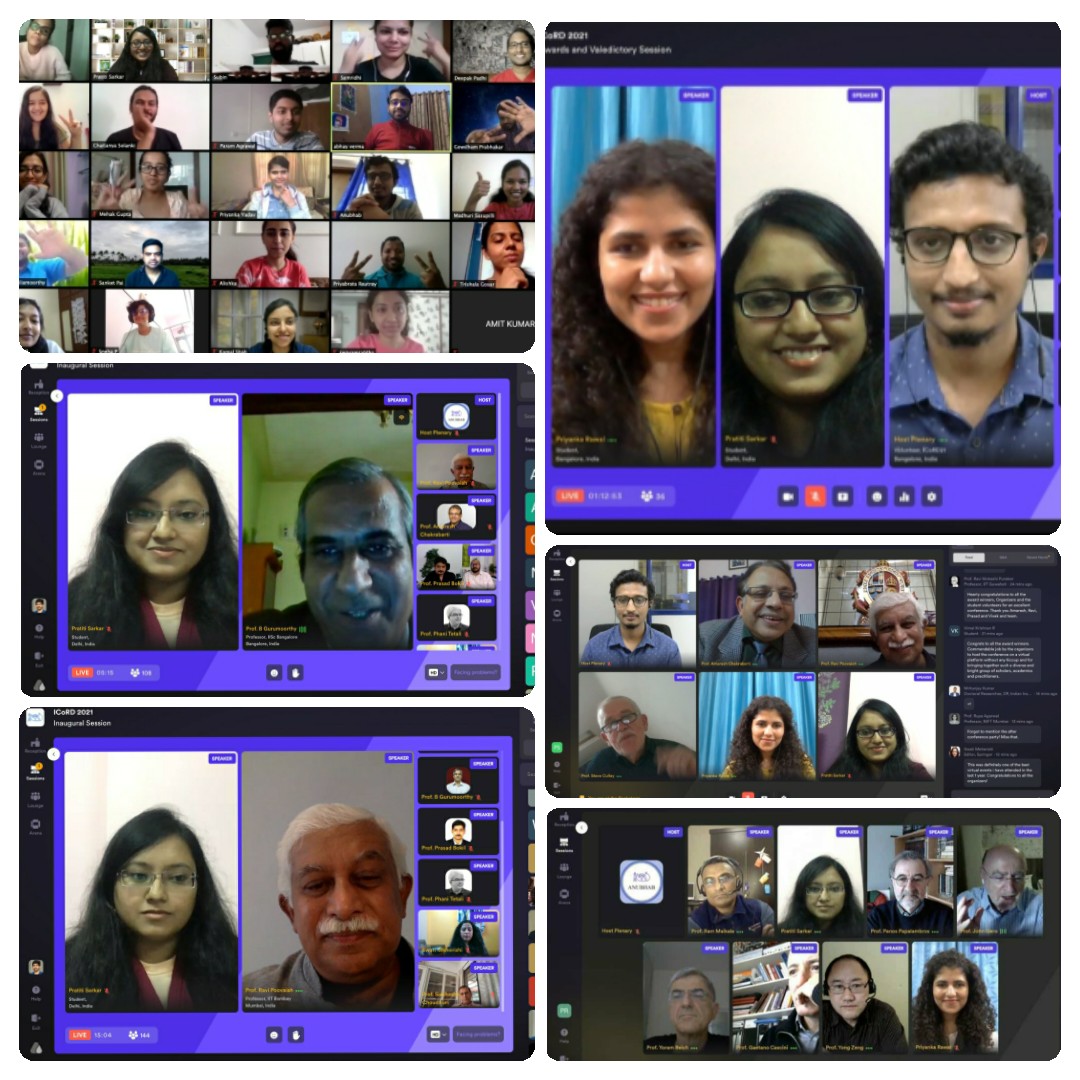
ICoRD 2021
IIT Bombay (Virtual)
Student Volunteer @ ICoRD'21
This year ICoRD'21 conference was hosted by IDC School of Design, IIT Bombay, on Airmeet. As a student volunteer, I was one of the emcees for the plenary sessions and organizer of the Young Researchers' Meet (YRM), where students from different design schools across India participated. A true roller coaster ride it was while sitting at home! With a few hiccups, the overall event turned out to be a great success. Kudos to a few sleepless nights, nerve-wracking moments and lots of lovable memories with the participating institutes' colleagues and professors!
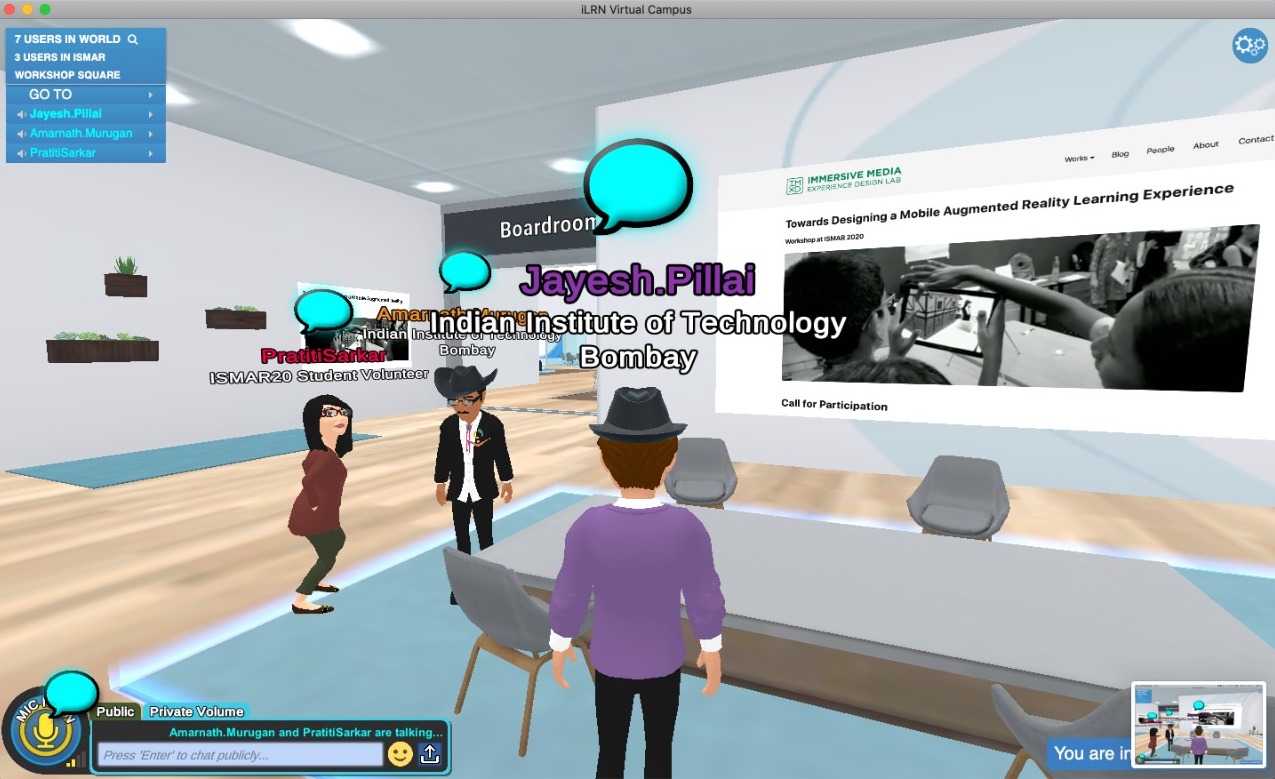
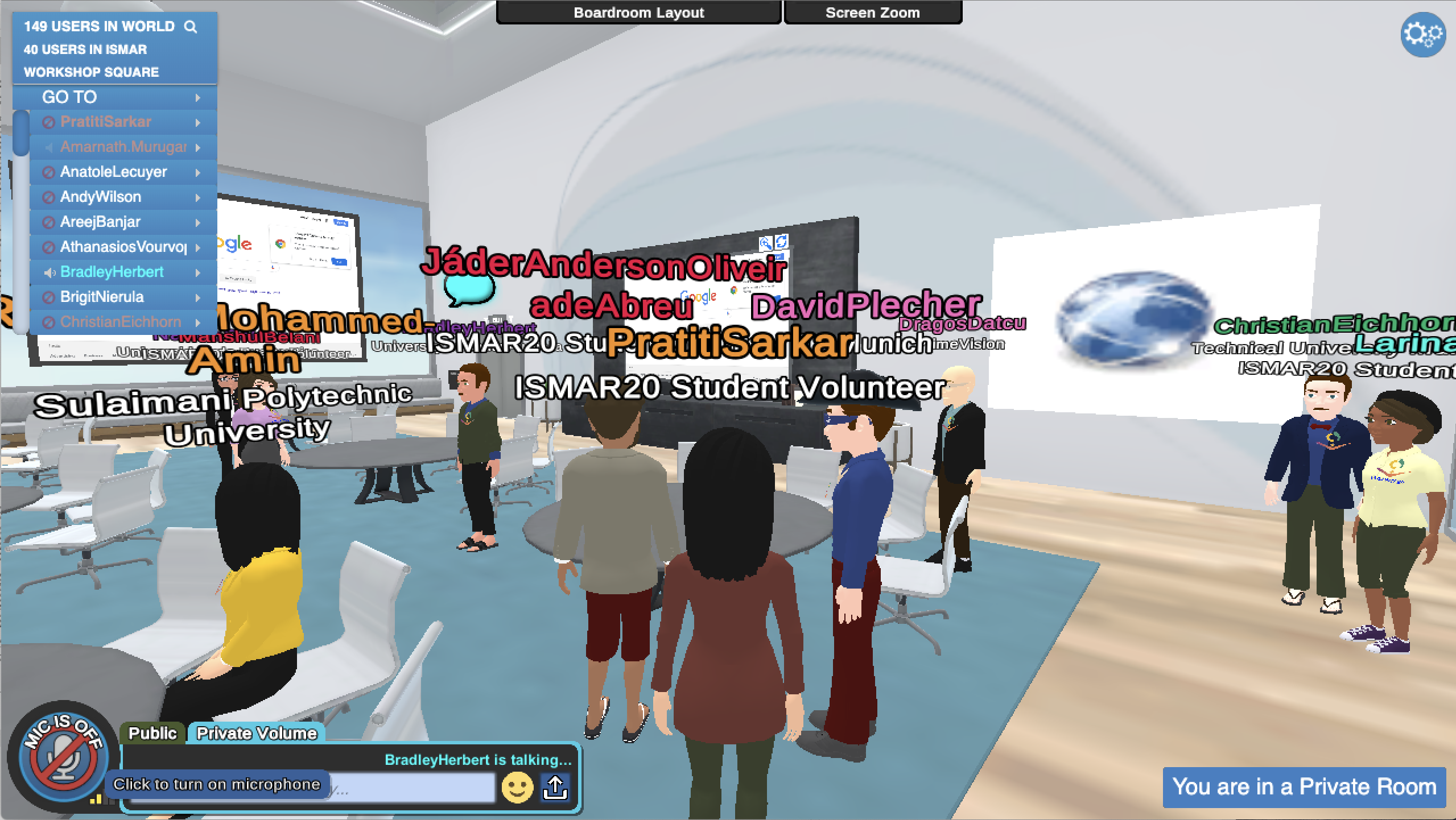
IEEE ISMAR 2020
Brazil (Virtual)
Workshop Organizer @ ISMAR'20
Got to experience another platform called Virbela at IEEE ISMAR 2020. Prof. Jayesh Pillai, Amarnath M. and I organized a workshop titled Towards Designing a Mobile Augmented Reality Learning Experience. Researchers from across the world shared their views and works on AR in education.
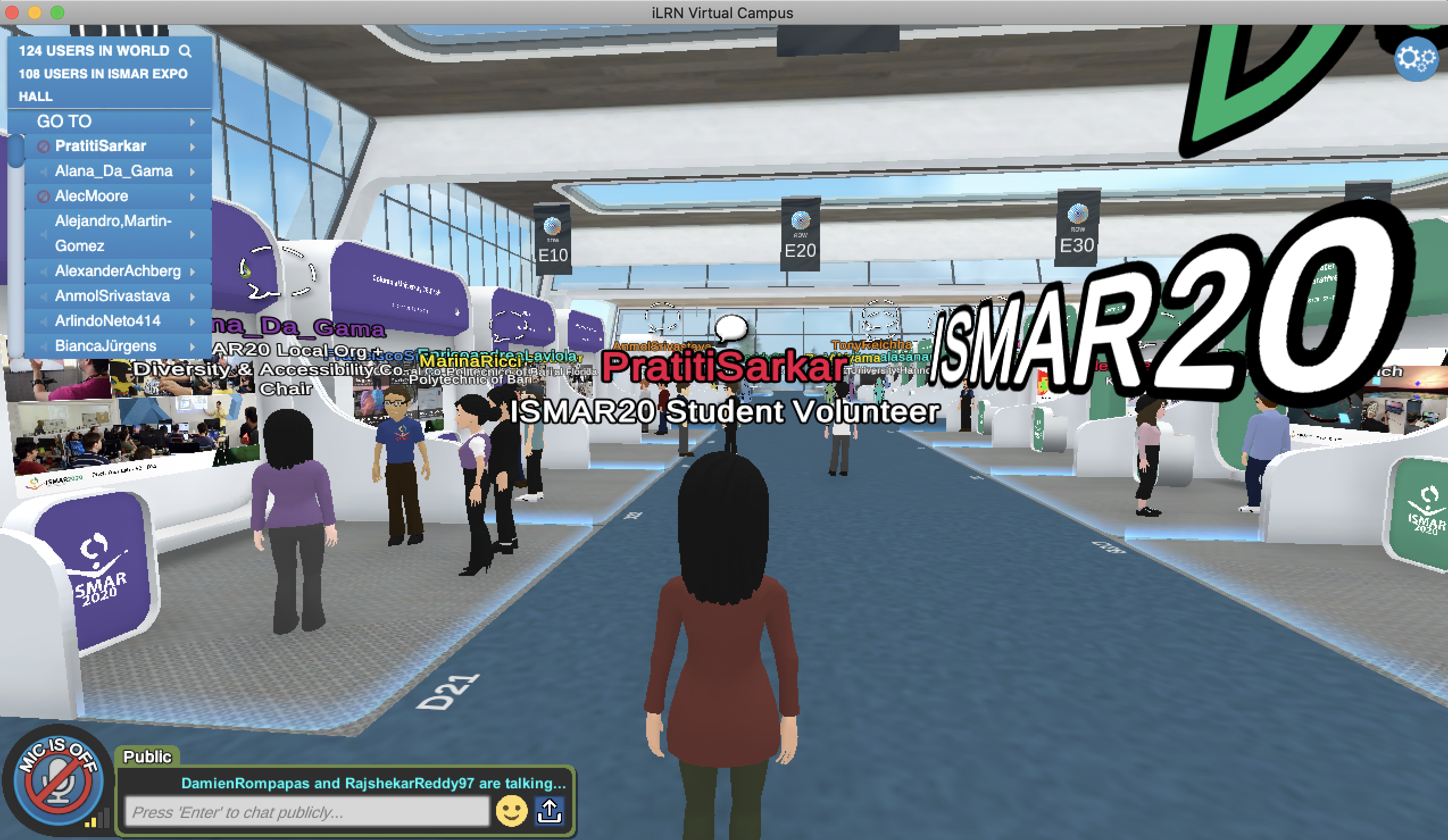
IEEE ISMAR 2020
Brazil (Virtual)
Student Volunteer @ ISMAR'20
The virtual mode of the conference due to the pandemic led to interacting with the virtual avatars of the participants at IEEE ISMAR 2020. It was a joyful experience to providing technical assistance as a SV and interacting with and the like minded researchers while sitting at home!
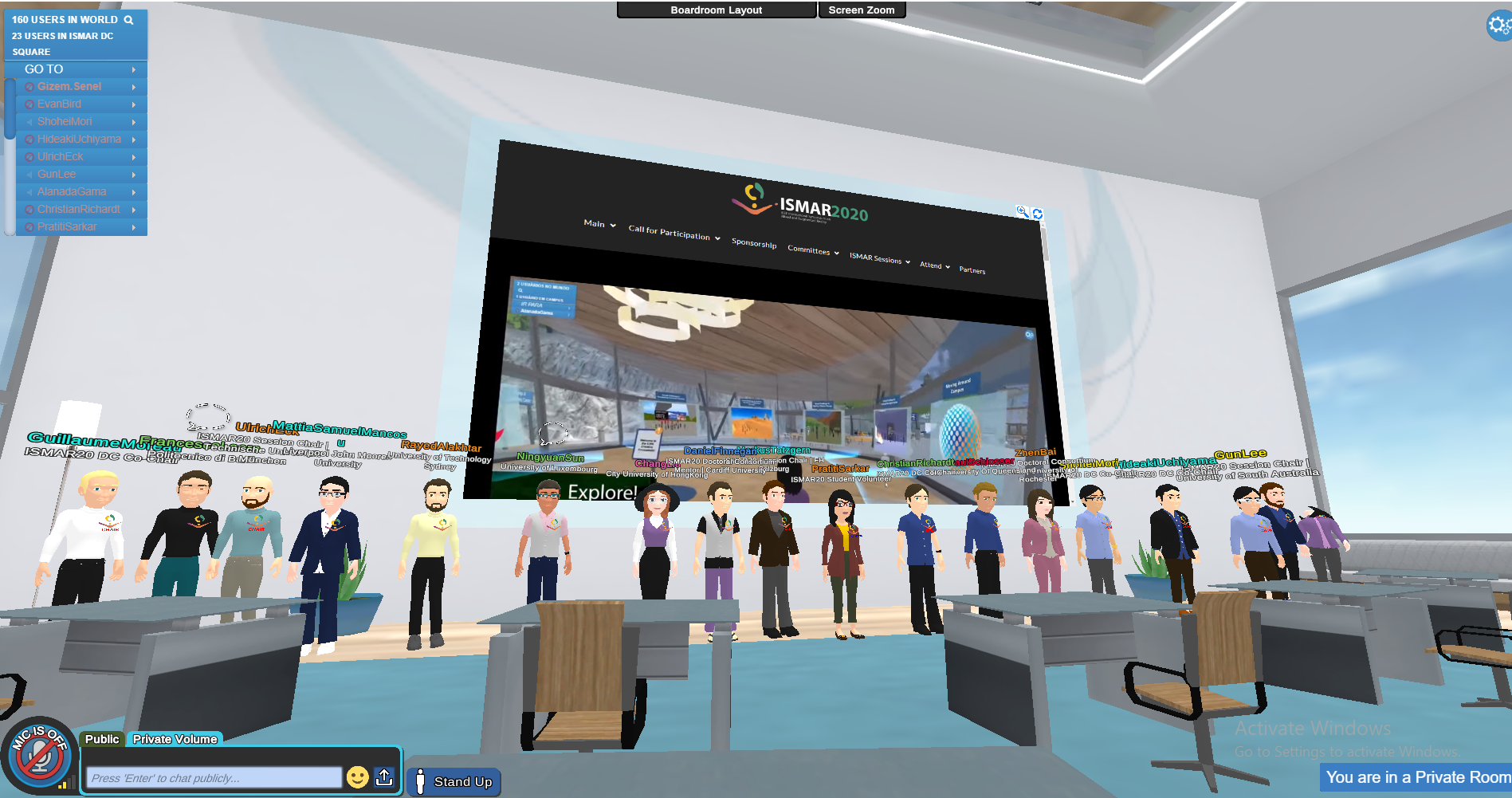
IEEE ISMAR 2020
Brazil (Virtual)
Doctoral Consortium @ ISMAR'20
I got to witness some unique works in Augmented and Virtual Reality spread across various domains of applications. Got some great feedback and suggestions from the mentors of the track towards the approach of my PhD work.
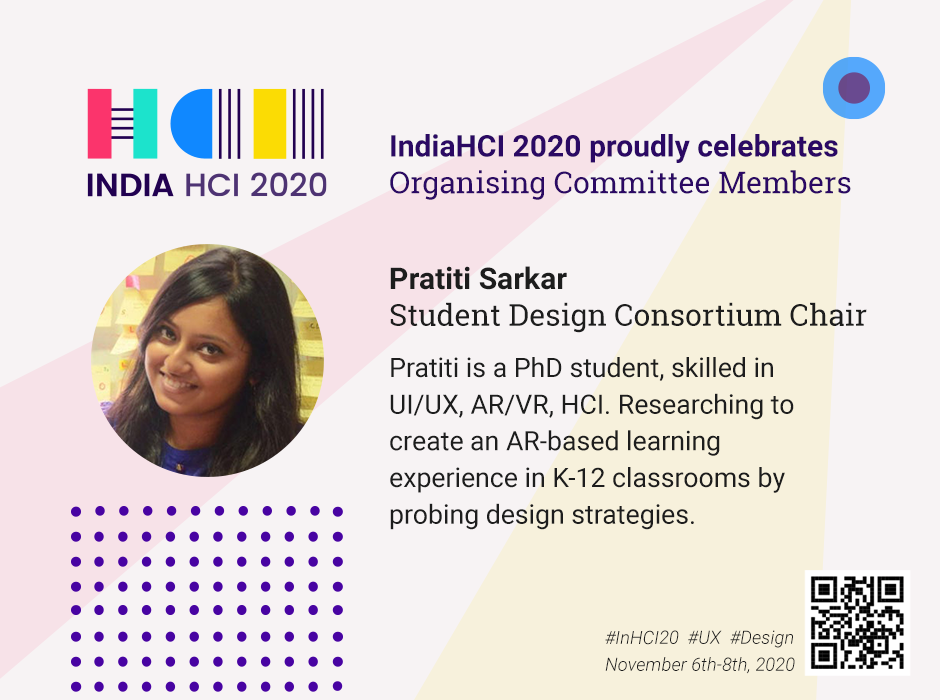
India HCI 2020
IIT Indore (Virtual)
Co-Chair: Student Design Consortium
It was an immense pleasure to be in the Organizing Committee of IndiaHCI 2020. The 8 months of efforts ended with the blink of an eye. The best part was to see the zeal of the participants and the SVs, even in the virtual mode!

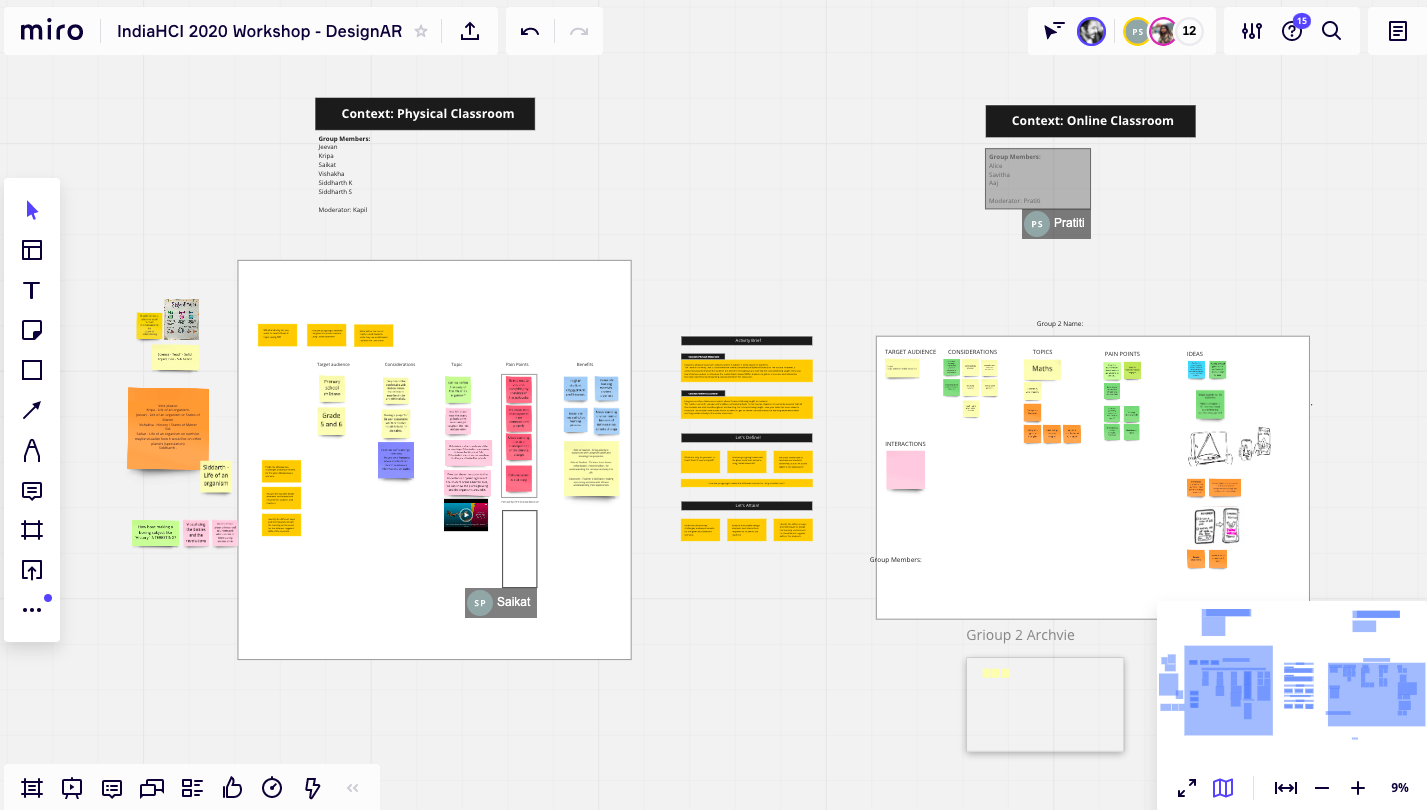

India HCI 2020
IIT Indore (Virtual)
Workshop Organizer @ IndiaHCI'20
Loved the enthusiasm of the participants during our workshop on DesignAR Classrooms: Towards Designing an Augmented Reality Experience at IndiaHCI 2020, organized with Dr. Kapil Kadam.
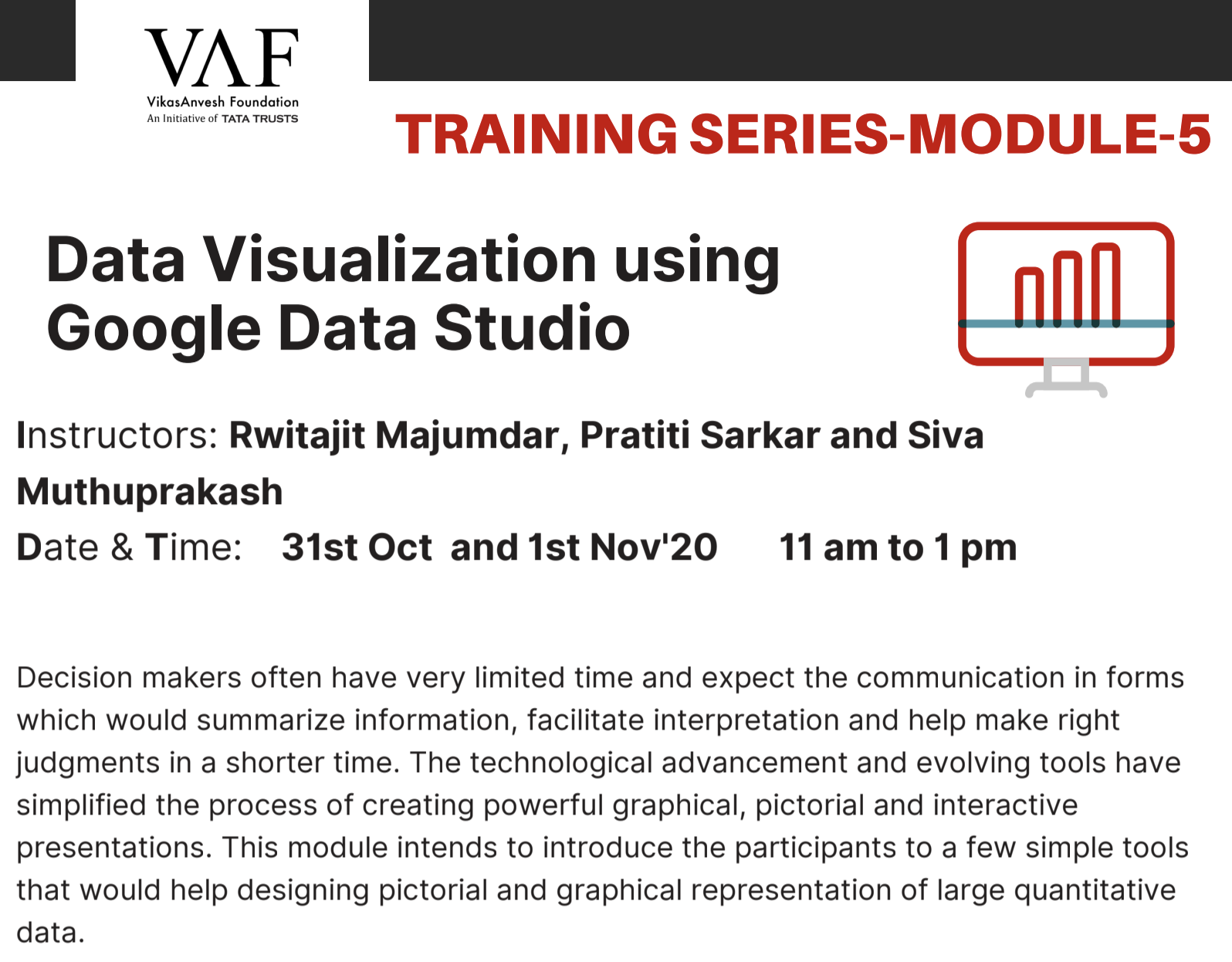
VikasAnvesh Foundation
Module 5
Workshop Organizer @ VAF
As part of the training series organised by VikasAnvesh Foundation for the professionals in the Development Sector, Dr. Rwitajit Majumdar (Kyoto University) and I took a workshop on Data Visualisation Tools and Techniques. This was followed by the demo of using Google Data Studio by Dr. Siva Muthuprakash.
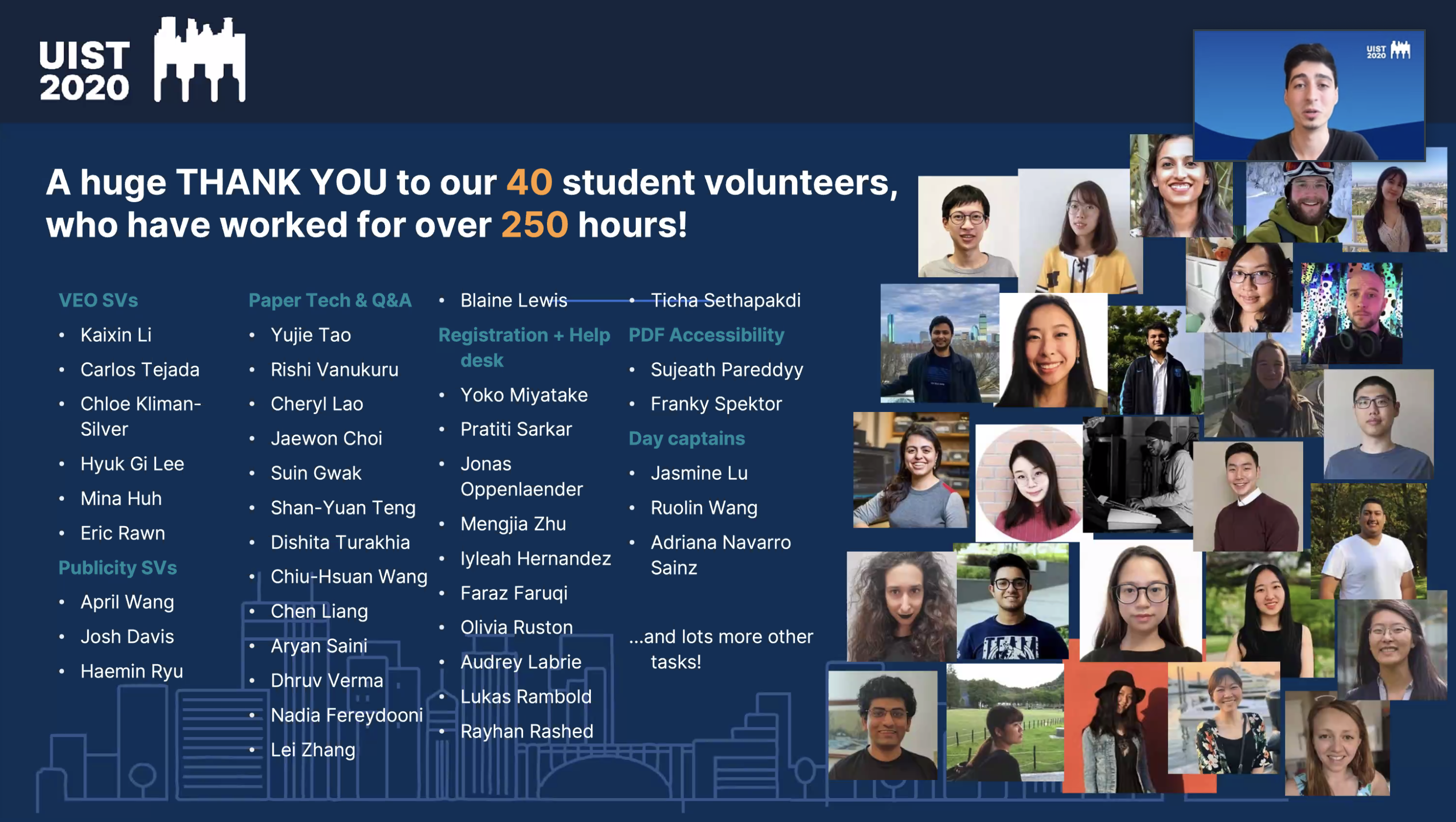
UIST 2020
Minneapolis (Virtual)
Student Volunteer @ UIST'20
Being the helping hands with many end minute tasks, we 40 SVs had a great time in cheerfully interacting and successfully conducting an online event. The SVs later got the privilege to have closed-group discussions with some of the eminent professors in the domain of HCI.
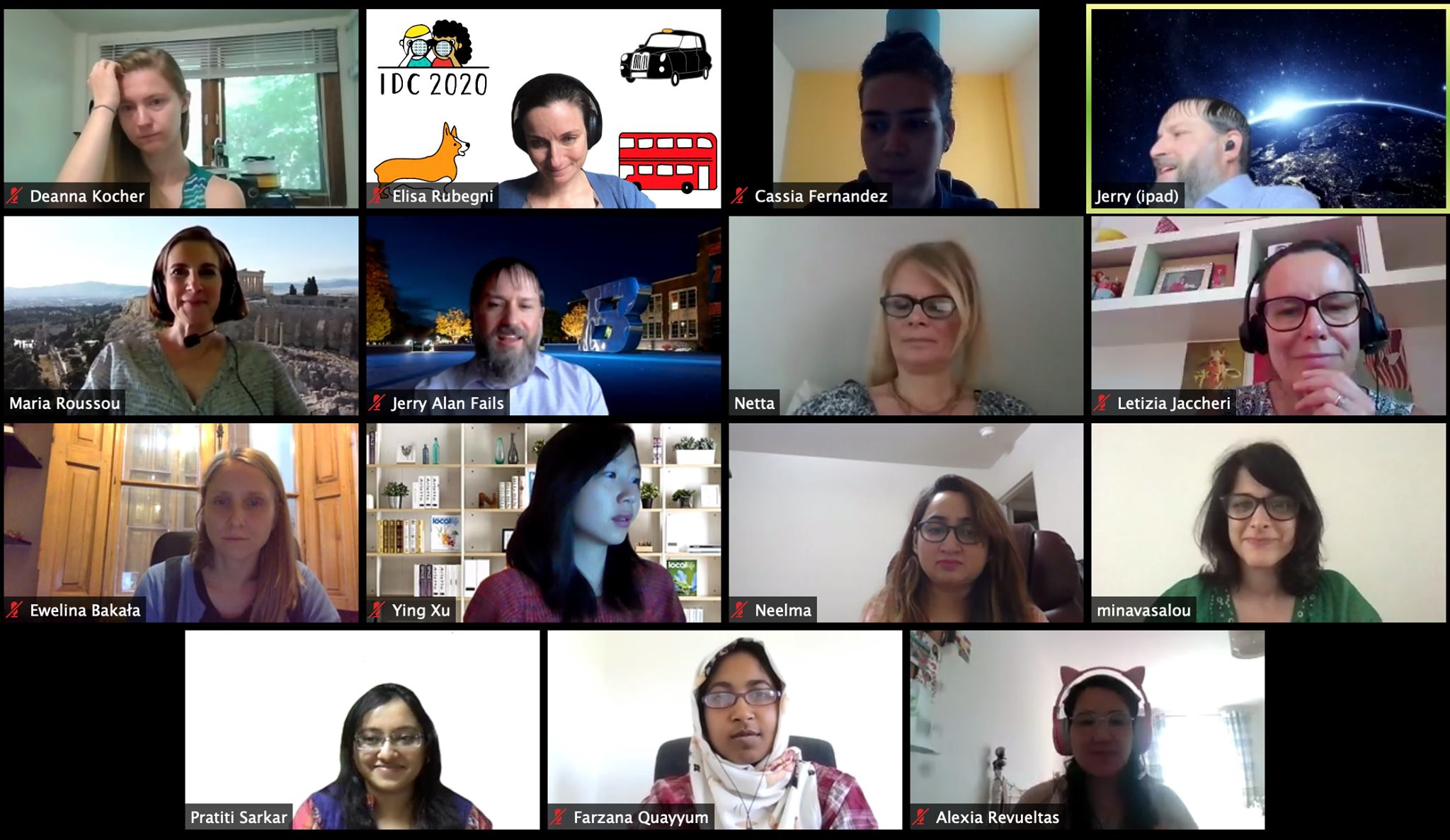
IDC 2020
London (Virtual)
Doctoral Consortium @ IDC'20
Getting shortlisted for the event gave me the opportunity to interact with the mentors in the related fields. I was intrigued by the discussions with the mentors and the fellow researchers. The session was quite enlightening in taking my research work forward!
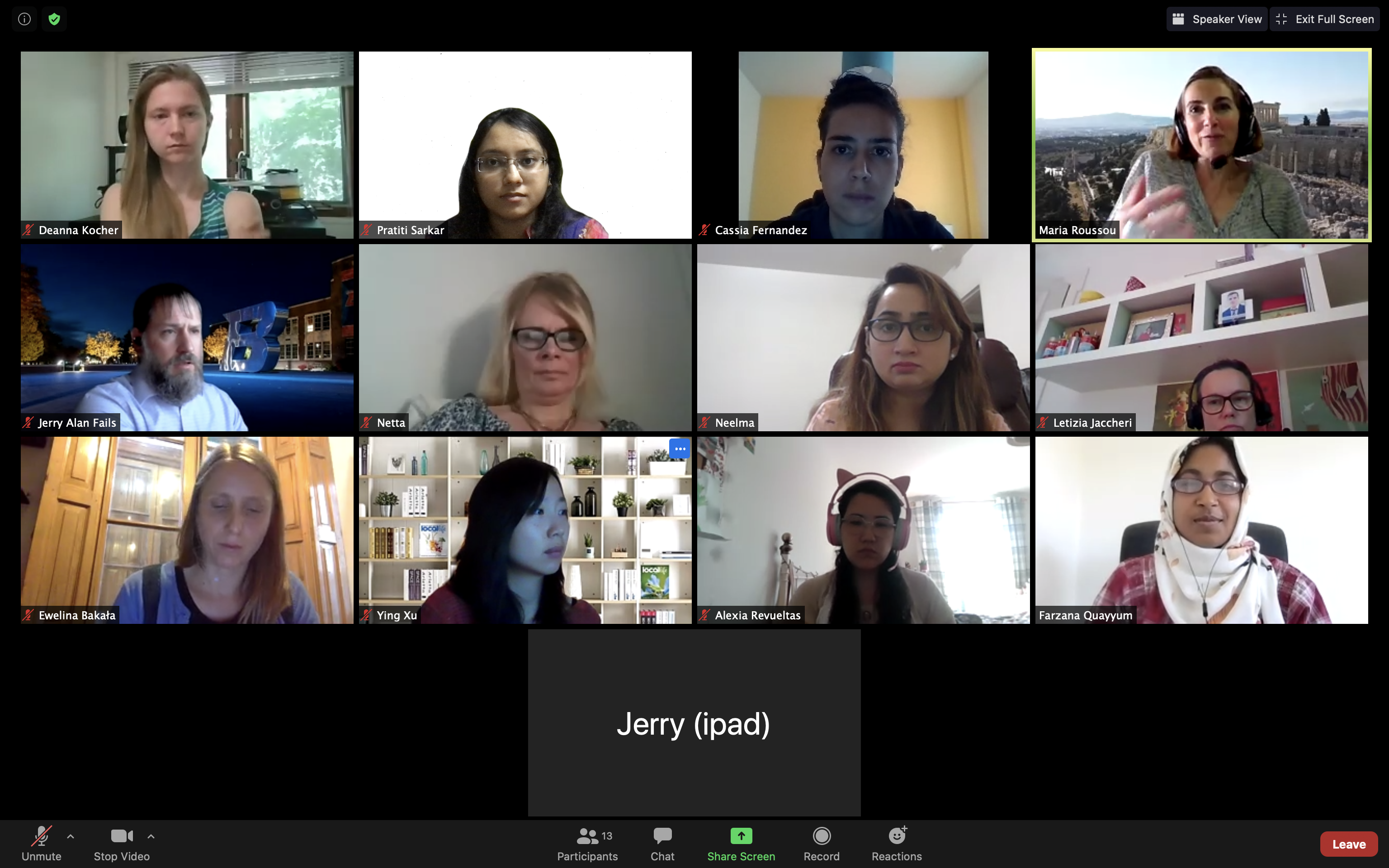
IDC 2020
London (Virtual)
Student Volunteer @ IDC'20
It was an interesting ride for all as the conference was among the initial ones to be organized virtually in the COVID-19 period. With big smiles and the best possible technical knowledge and assistance, the conference was successfully hosted.
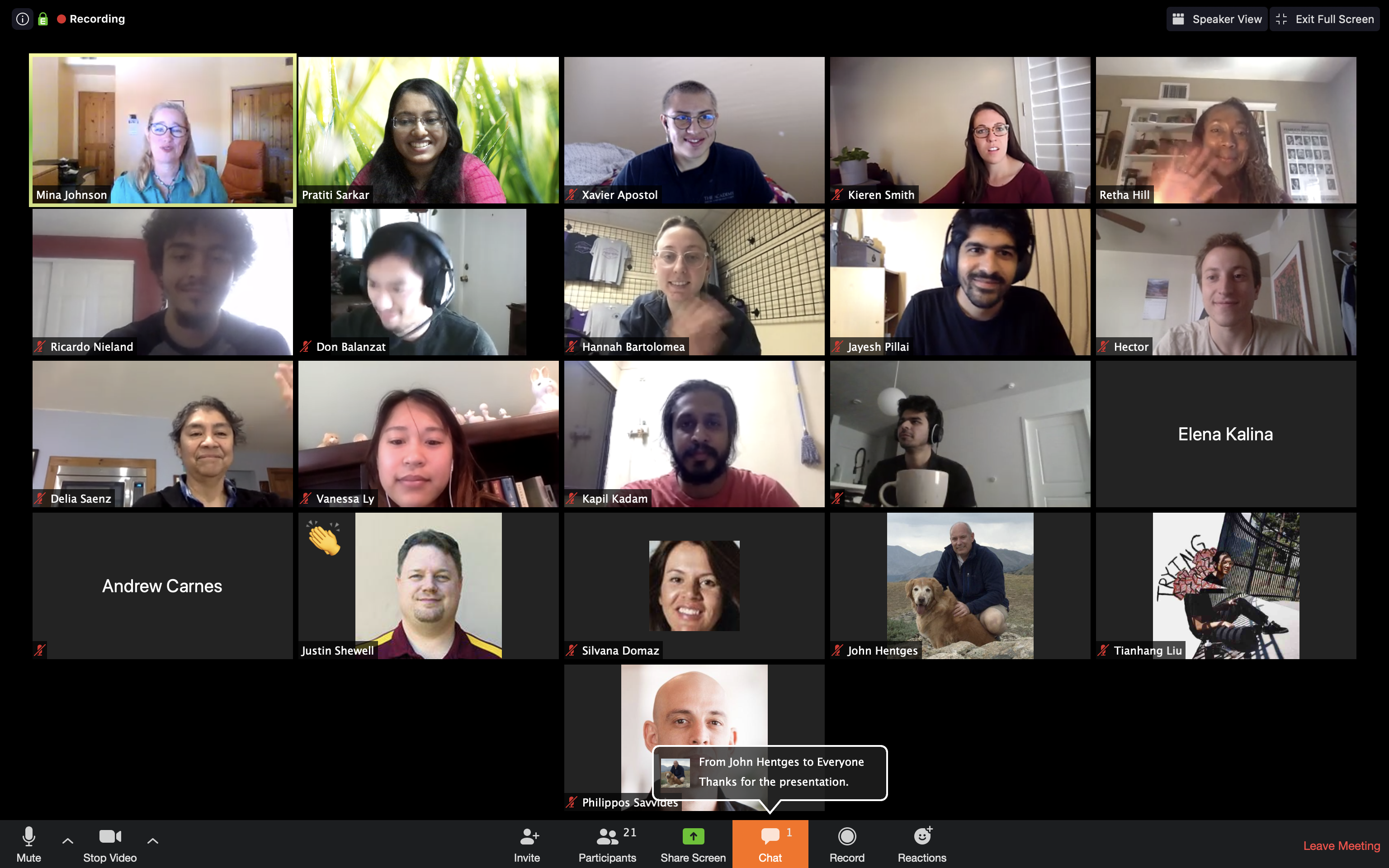
FEVAR Lab
ASU (Virtual)
Virtual Talk @ Arizona State University
I was invited by Prof. Mina C. Johnson from The Future of Education for Virtual and Augmented Reality (FEVAR) Lab at Arizona State University to give an online talk related to my ongoing PhD work in the domain of Augmented Reality and education.
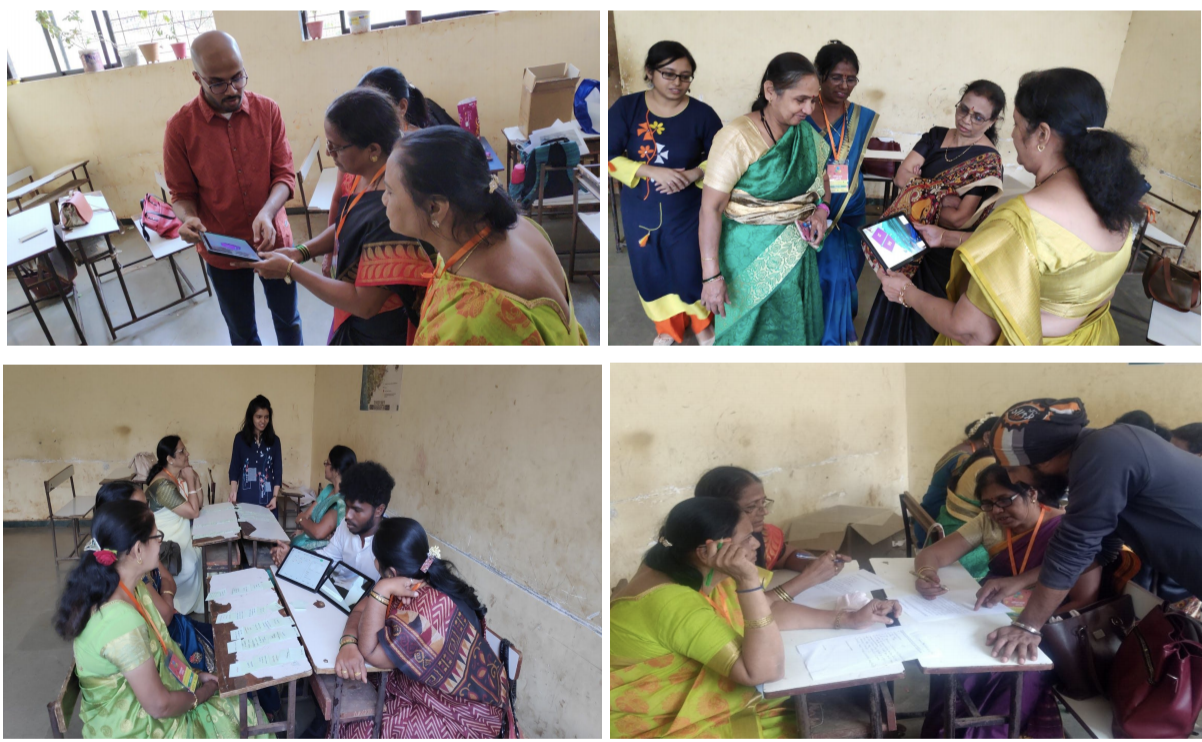
Math Fair 2020
Navnirmiti, Mumbai
Card Sorting with Teachers @Math Fair
We interacted and showed the demo of our AR application to the teachers at the Math Fair. A card sorting session was also conducted to outline the expected information architecture of the teachers' side of the application.
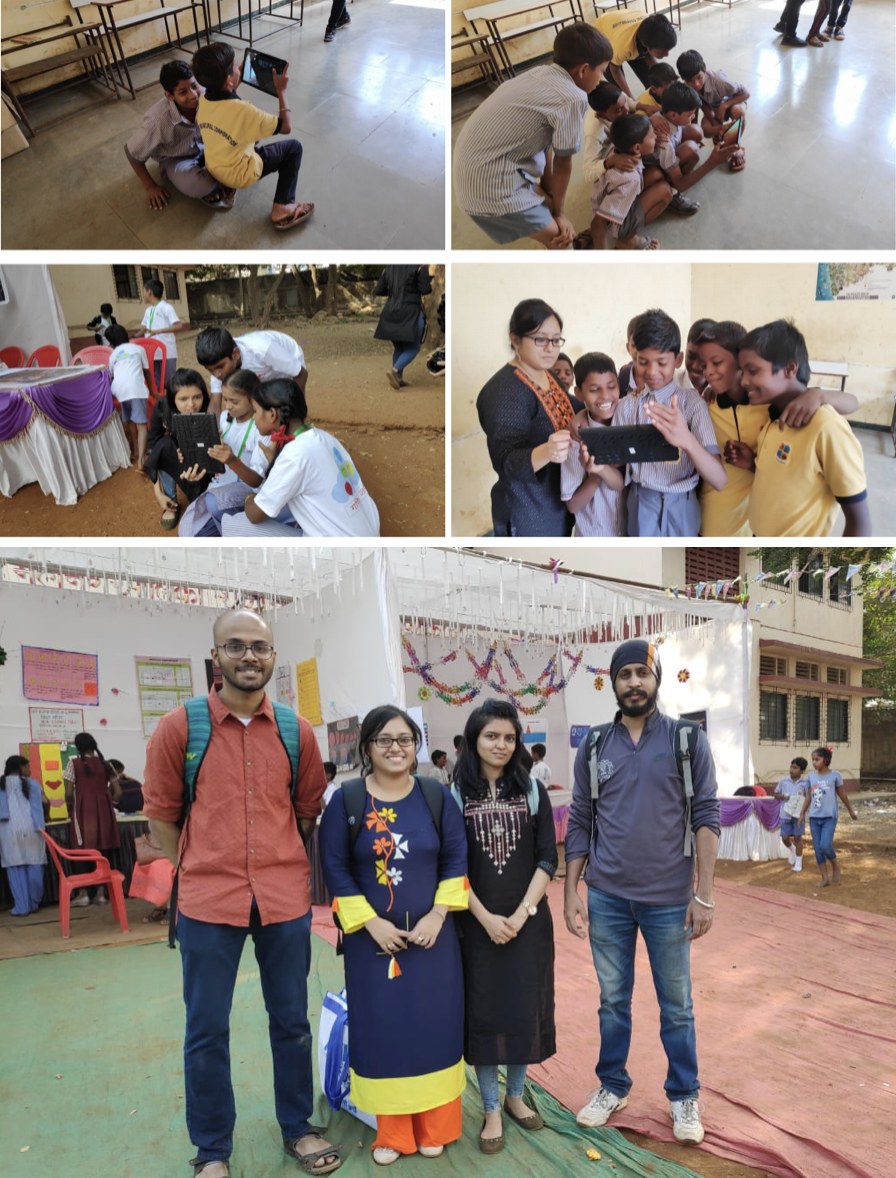
Math Fair 2020
Navnirmiti, Mumbai
AR Demo with Students @ Math Fair
The students enjoyed the exploration of the Augmented Reality technology in Maths at the Math Fair organised by Navnirmiti Eduquality Foundation, Mumbai. I was accompanied by Dr. Kapil, Rishi, Shraddha and Amal, who all helped together to maintain the overall enthusiasm of the students at the event.
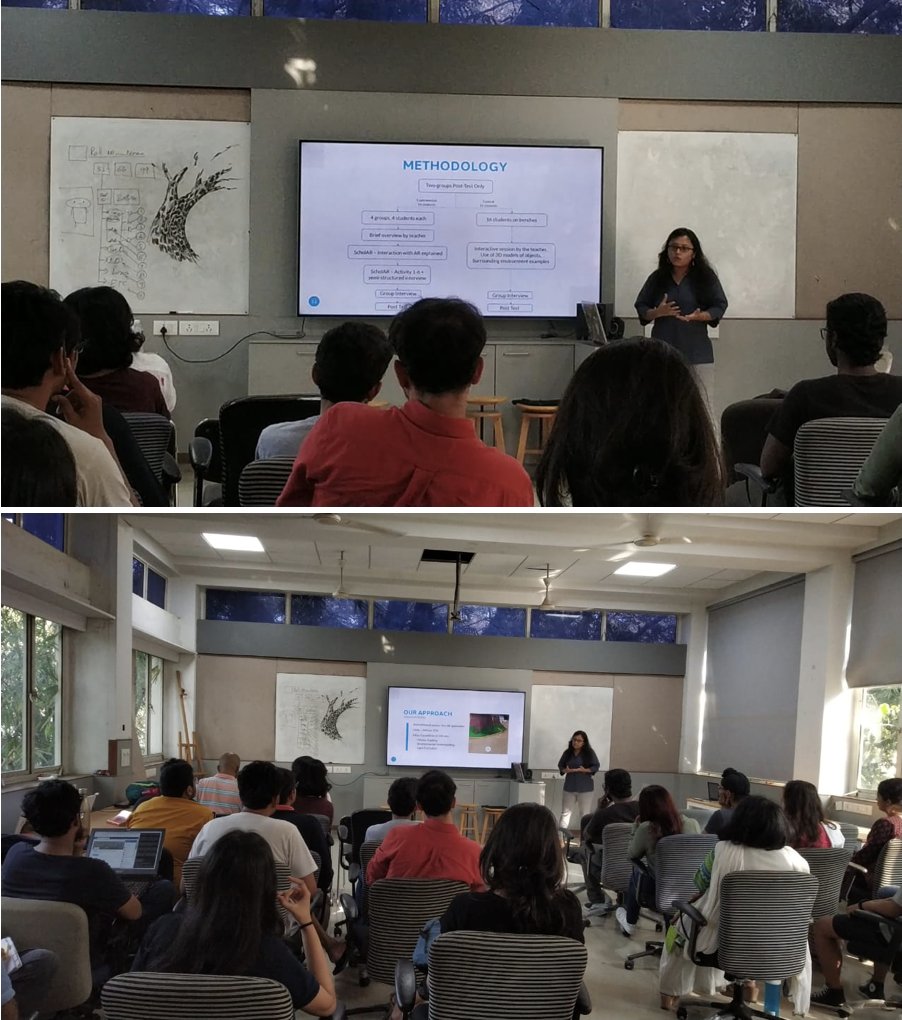
ACM SIGCHI Mumbai Student Chapter Meet
IIT Bombay
Talk on ARLEs
ACM SIGCHI Mumbai Student Chapter invited me as one of the presenters on their 6th monthly meet. I got to present my ongoing PhD work and its reflections on HCI among the HCI enthusiasts and design students.
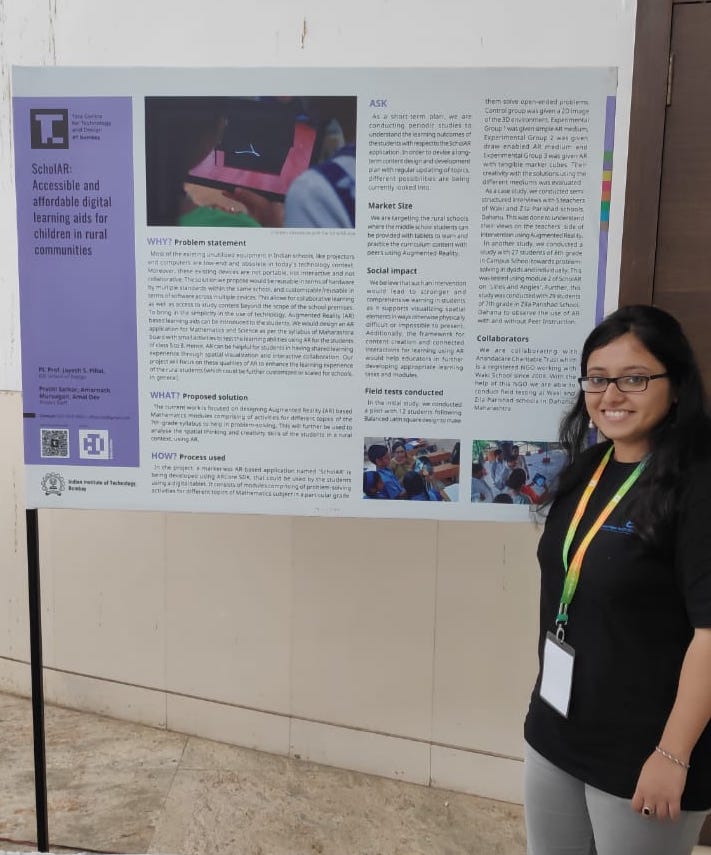
TCTD Symposium 2020
IIT Bombay
Poster Presentation @ TCTD Symposium'20
It was a joyful experience presenting the poster of our lab's project titled Accessible and Affordable Digital Learning Aids for Children in Rural Communities to IITB faculty members, TATA fellows, investing agencies, Policy Makers and Field Partners as part of the annual symposium organised by Tata Centre for Technology and Design (TCTD) at IIT Bombay.
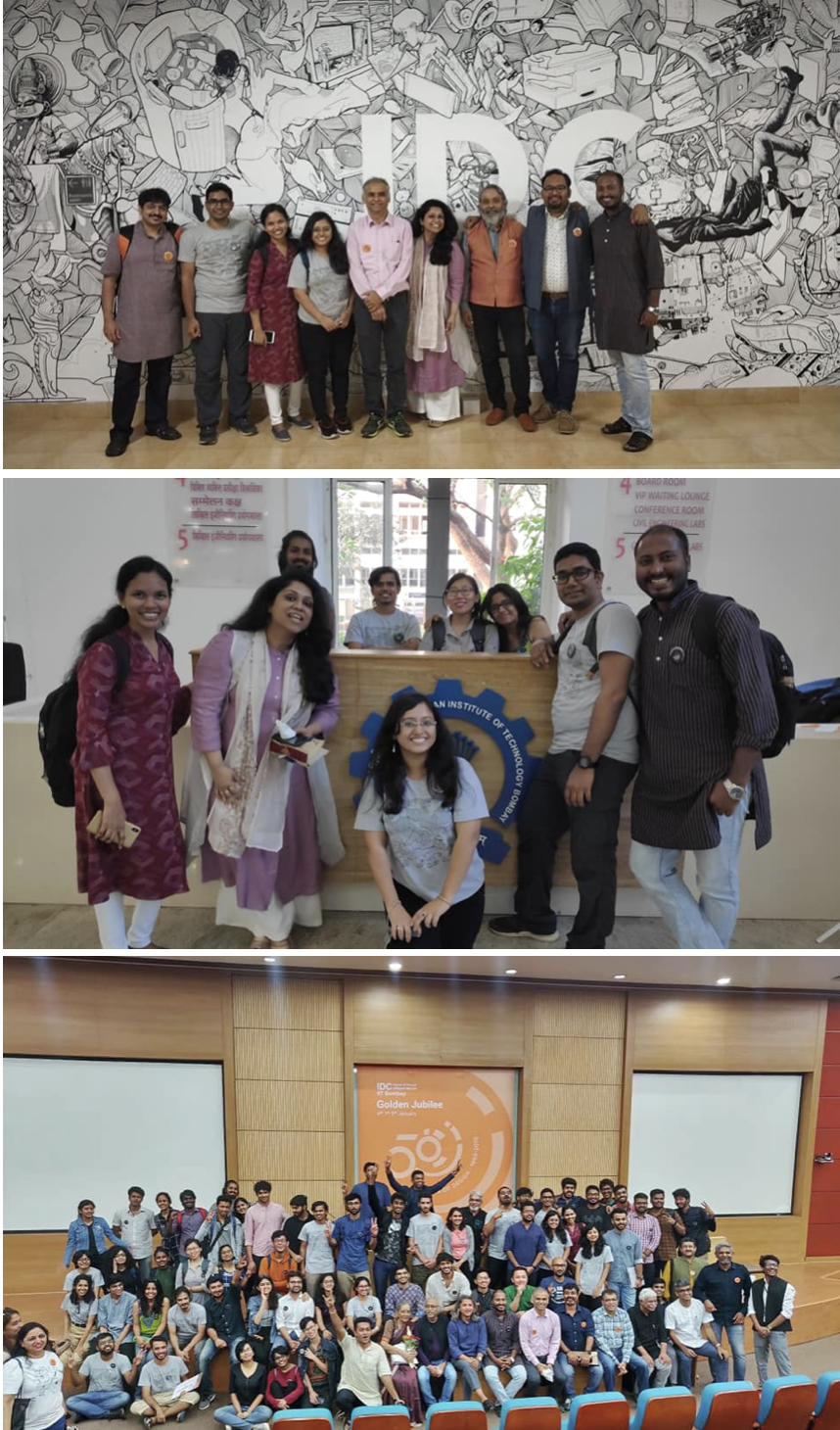
IDC Golden Jubilee
IIT Bombay
Student Volunteer @ IDC Golden Jubilee Design Conference
Felt privileged to be a part of the 50 years celebration of IDC School of Design, IIT Bombay. The event made to witness the spectrum of designers - from the pioneers to the budding ones! As the Event Incharge for the Beyond Reality track, we got to showcase the AR and VR related projects at our lab to the audience.
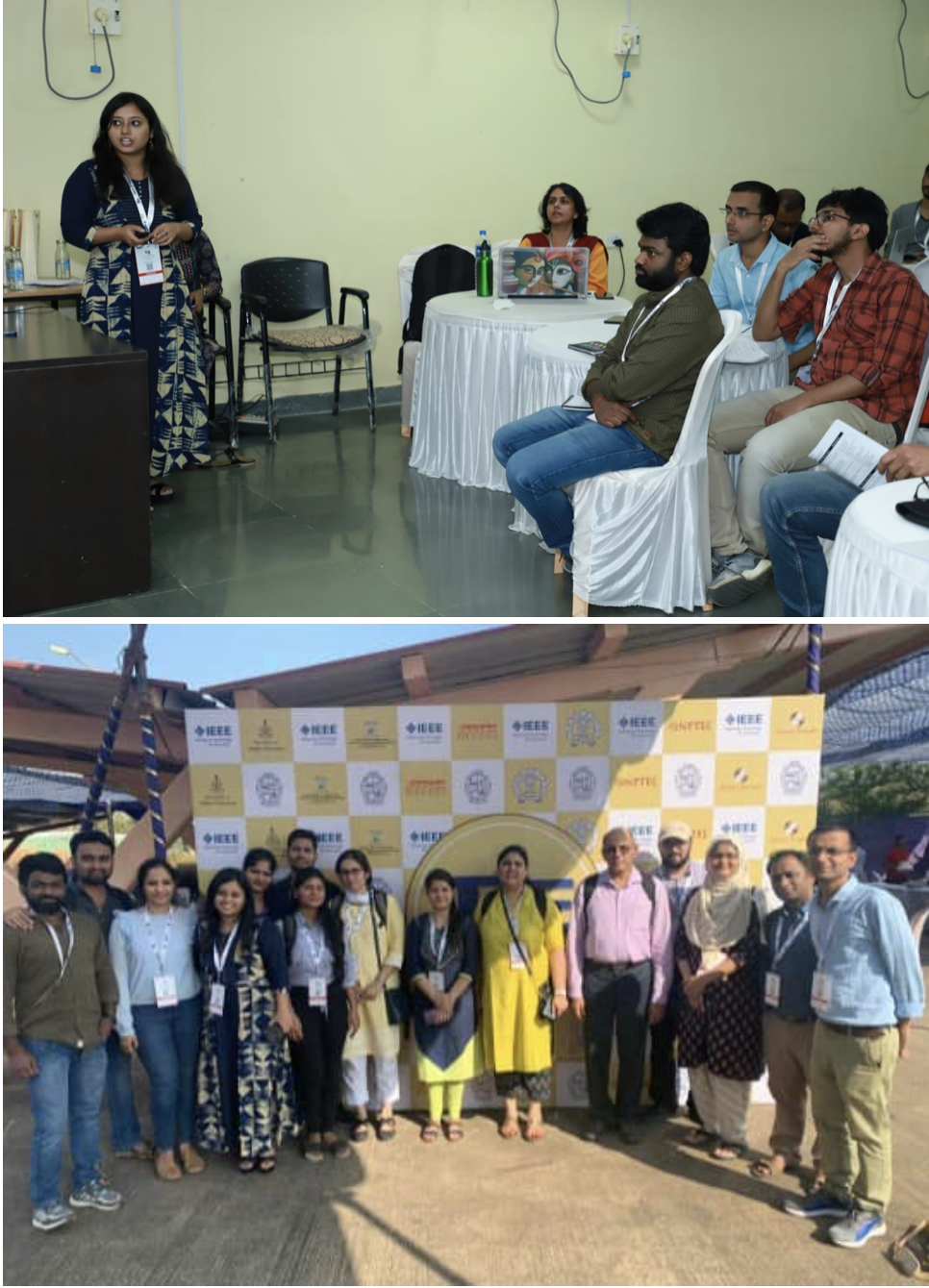
T4E 2019
Goa University
Paper Presentation @ T4E'19
A pleasant experience to present a paper in the land of beaches. The discussions on the approach of work was a great takeaway.
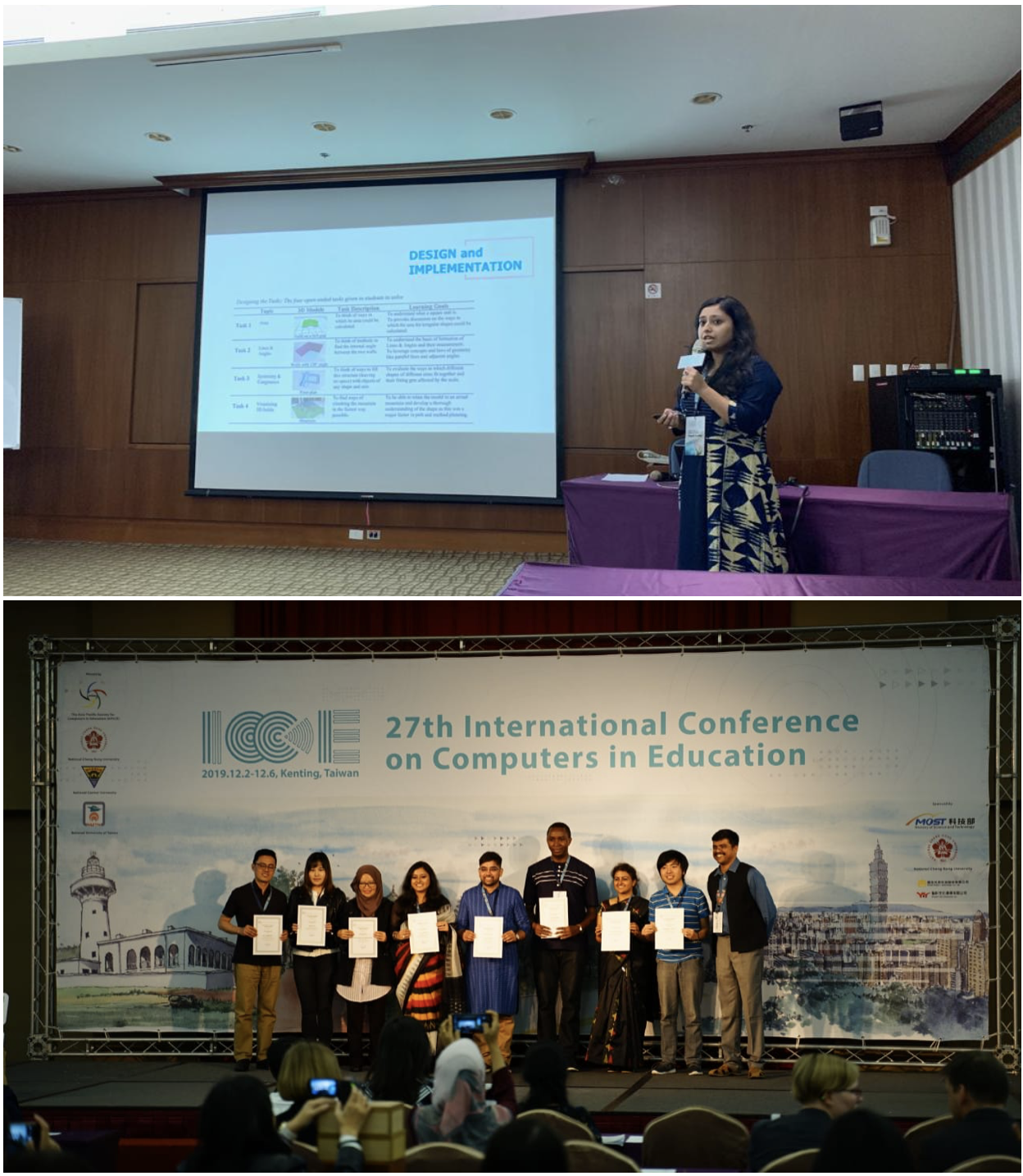
ICCE 2019
Taiwan
Paper Presentation @ ICCE'19
The paper presentation at ICCE gave me the opportunity to interact with researchers in the field of education from different Asian countries. This was the first time ever I stepped out of India. More mesmerizing was the Taiwan culture and their hospitality.
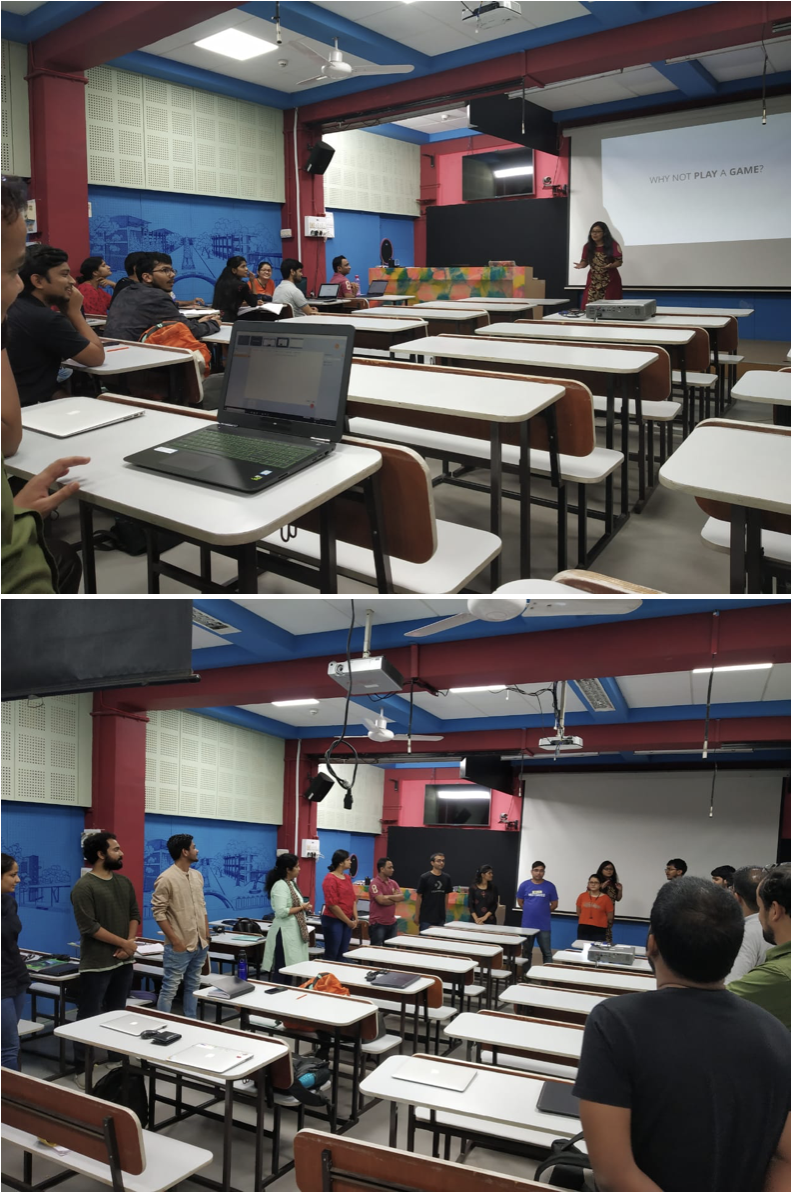
Game Design
IDP in Educational Technology, IITB
Guest Lecture - ET601, IITB
It was a pleasure giving a guest lecture on Game Design as part of the course ET601 at the Interdisciplinary Programme on Educational Technology, IIT Bombay. We played games and tried to understand the construction of a game in education.
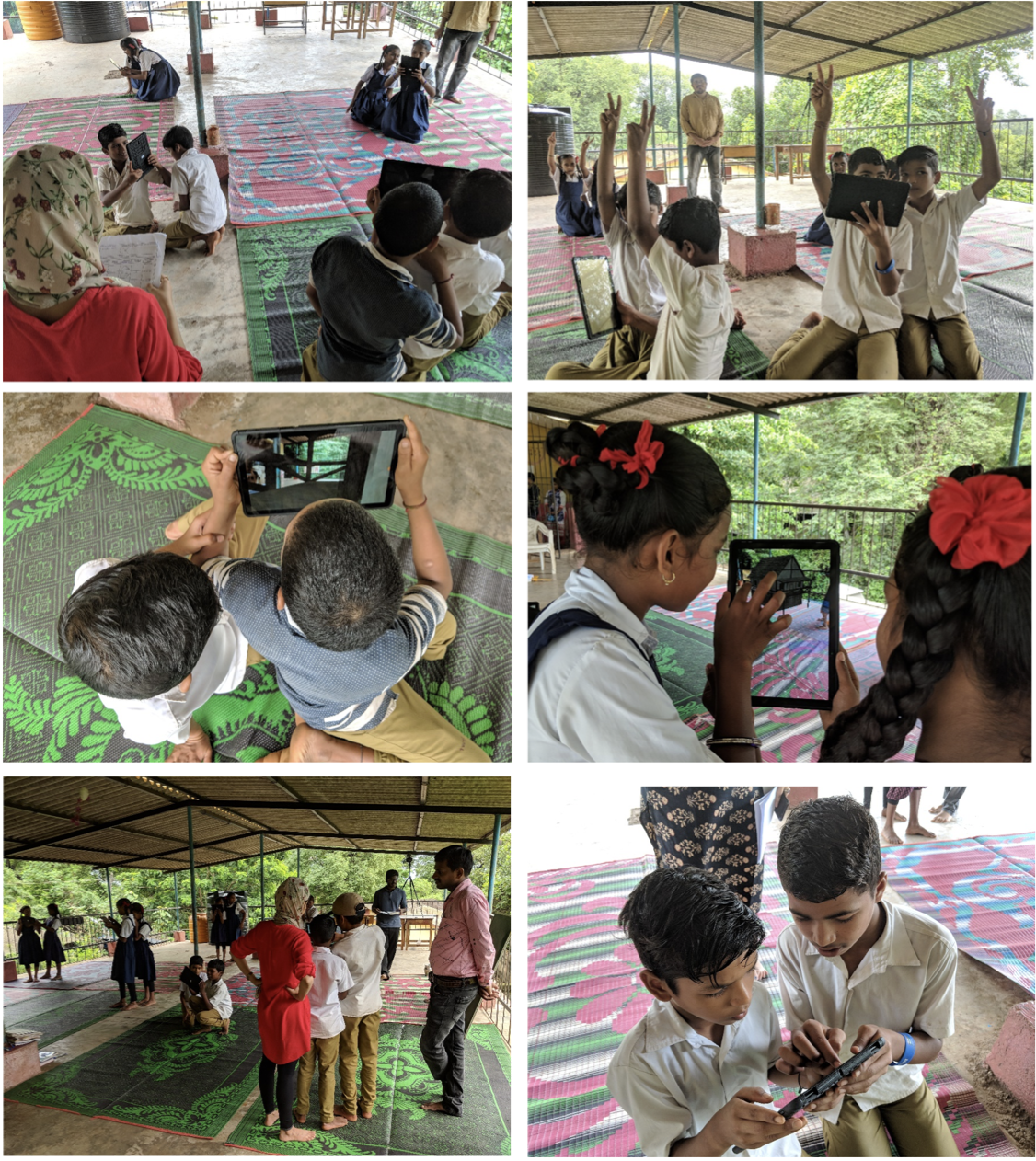
Field Study
Dahanu, Maharashtra
Testing the AR module on Lines and Angles in a Rural School
We visited a rural school in Dahanu, Maharashtra where 7th grade students participated in a study conducted for two days. It was interesting to observe the interactions and enthusiasm of the students as they experienced the use of a tablet and the AR technology for the first time. They identified and marked some angles while applying the learnt concepts of Lines and Angles using our ScholAR application. Special thanks to Shraddha Dhodi for translating and delivering the study content in Marathi, and Amarnath, Amal, and Suraj for accompanying.
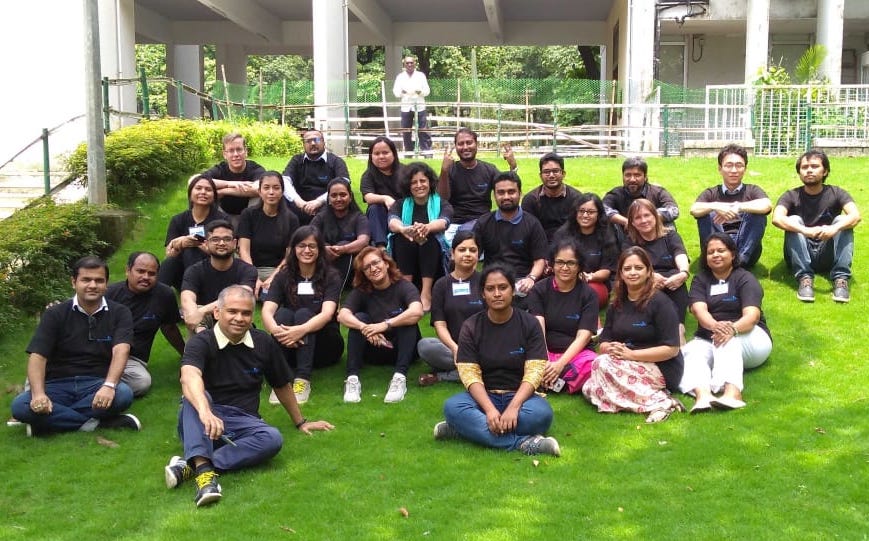
Summer School
IIT Bombay
Summer School - Write a Paper for CHI 2021
Being among the 20 selected participants, we were guided on the requirements and needful actions while writing a paper for CHI conference. We got to present our ongoing research work and received useful feedback for converting the work into a CHI paper in the future.
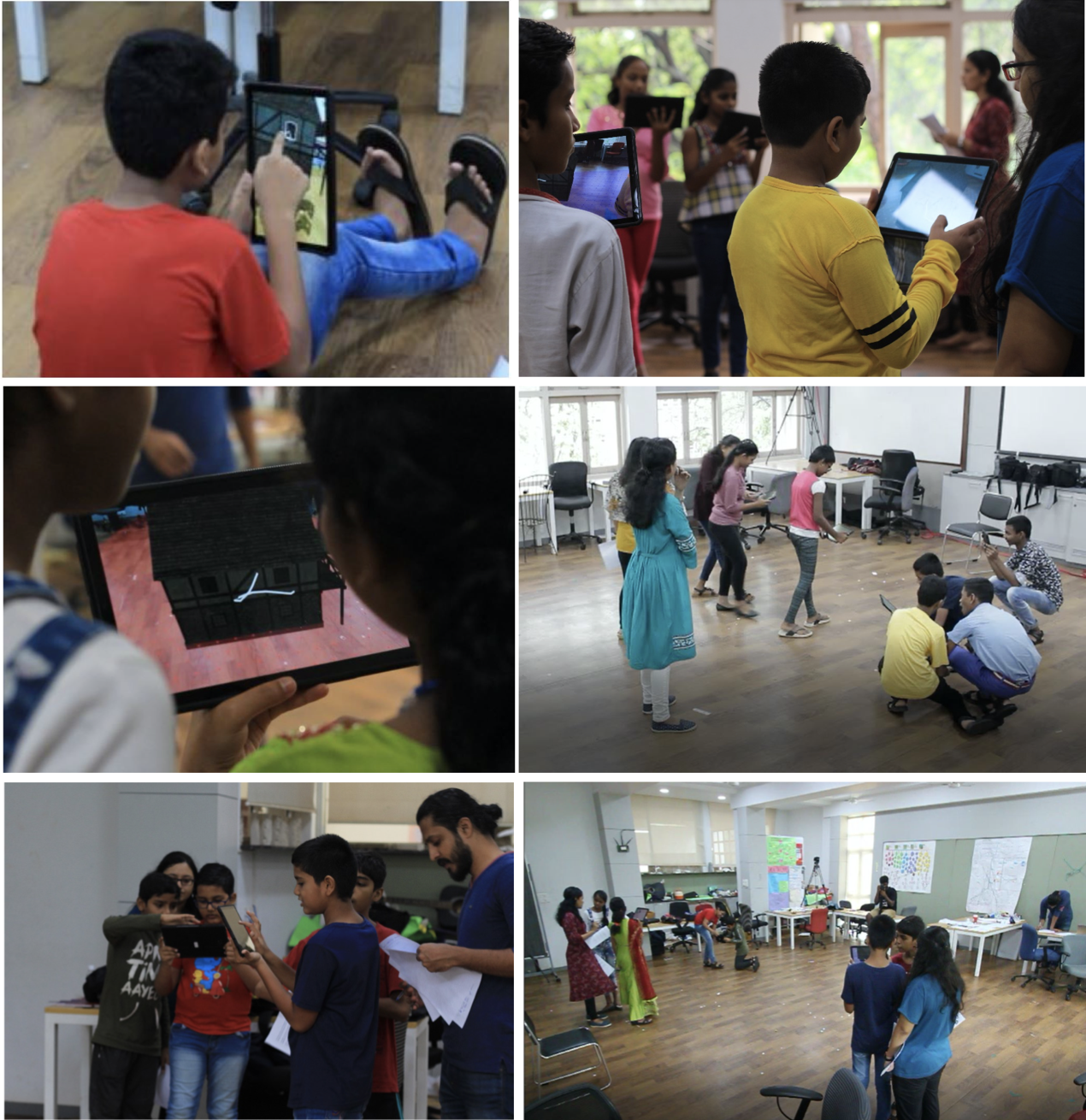
Lab Study
IIT Bombay
Testing the AR module on Lines and Angles
A few 7th grade students of a school in Mumbai were invited to our department for the study. Angela, Madhuri, Dr. Kapil and Amal helped in conducting and recording the session where we tested the ScholAR application designed on the topic of Lines and Angles.
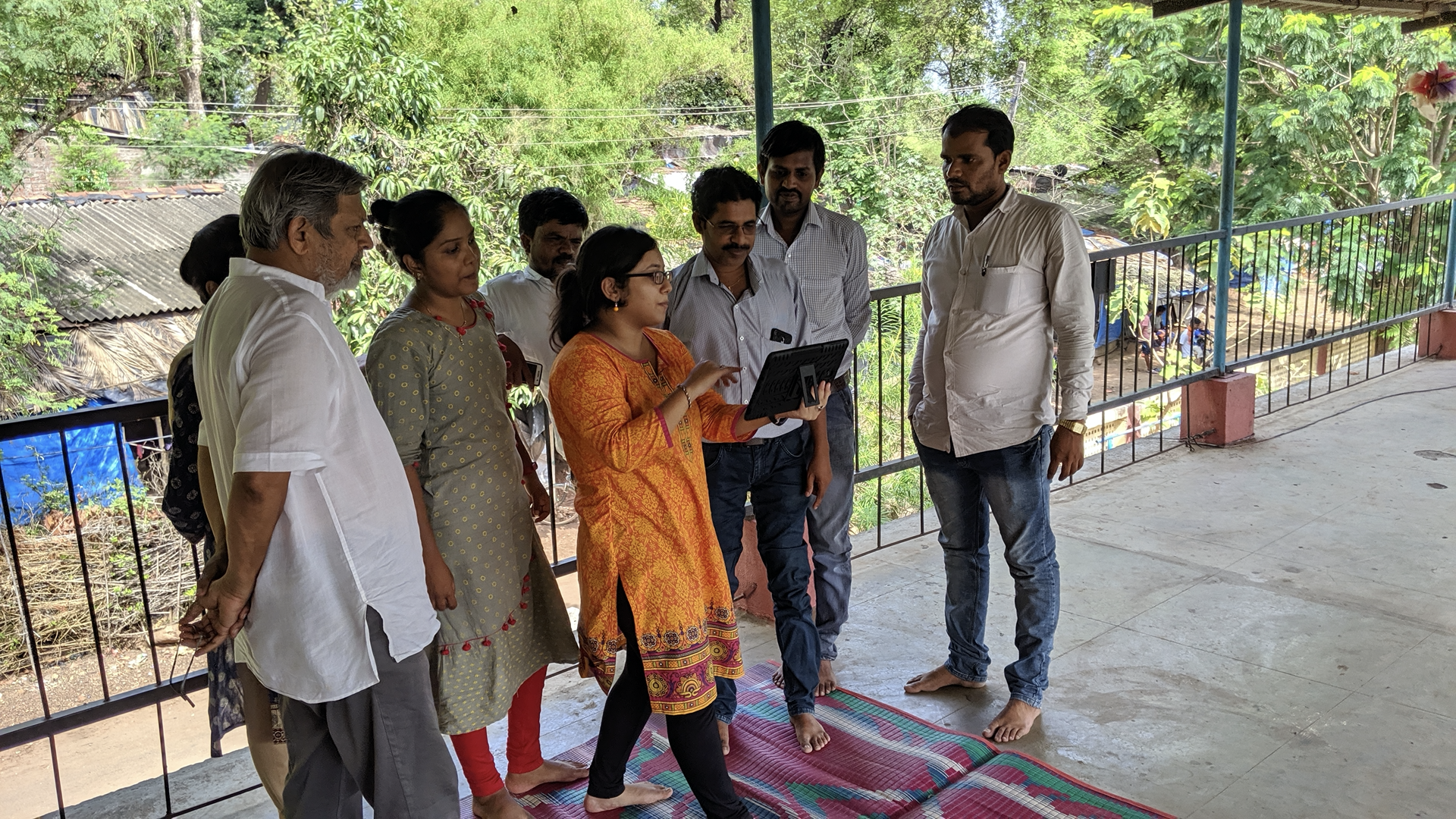
Demonstration
Dahanu
Demo of the ScholAR app to Teachers
It was delightful to watch the teachers in rural schools enjoying and witnessing the first time use of an AR application. We gave them a demo of our ScholAR app and recorded their perceptions of using it in their Mathematics classes.

AMCCI 2019
IIT Guwahati
Attended the Advanced Course in Methods for Child-Computer Interaction
I was grateful to attend a two-day course by Prof. Janet Read and Gavin Sim that guided towards designing interactive products and services for children. This was jointly organised by the Department of Design (DoD), IIT Guwahati and the Centre for Linguistics Science and Technology (CLST), University of Central Lancashire UK.
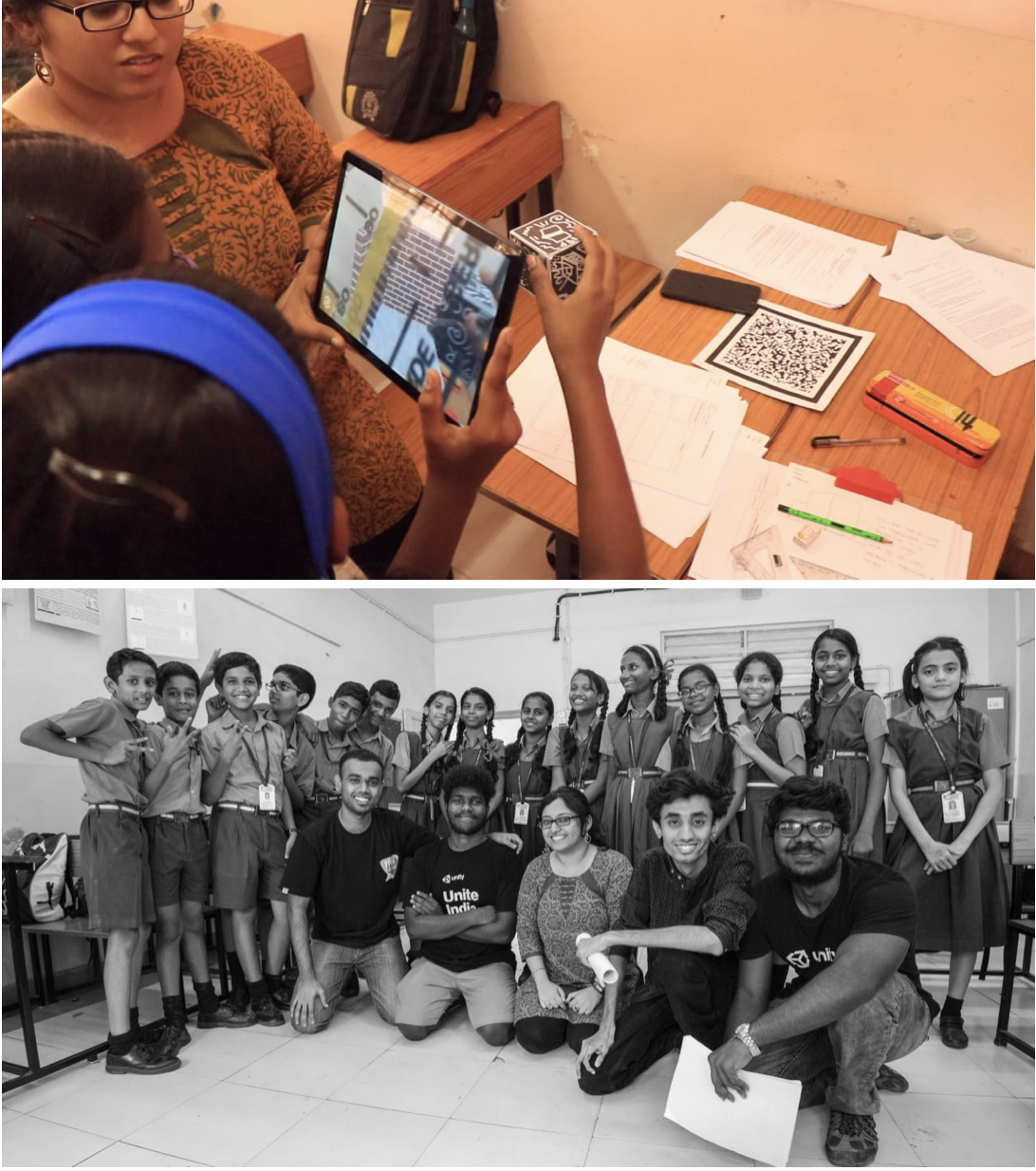
Field Study
Mumbai
Testing the AR Interaction Mediums
We tested different AR interaction mediums with different tasks in AR. The study was conducted with multiple groups of students, where each group was accompanied by a researcher. Jonathon, Prabodh, Utsav, Amarnath and Amal were the helping hands in this study.
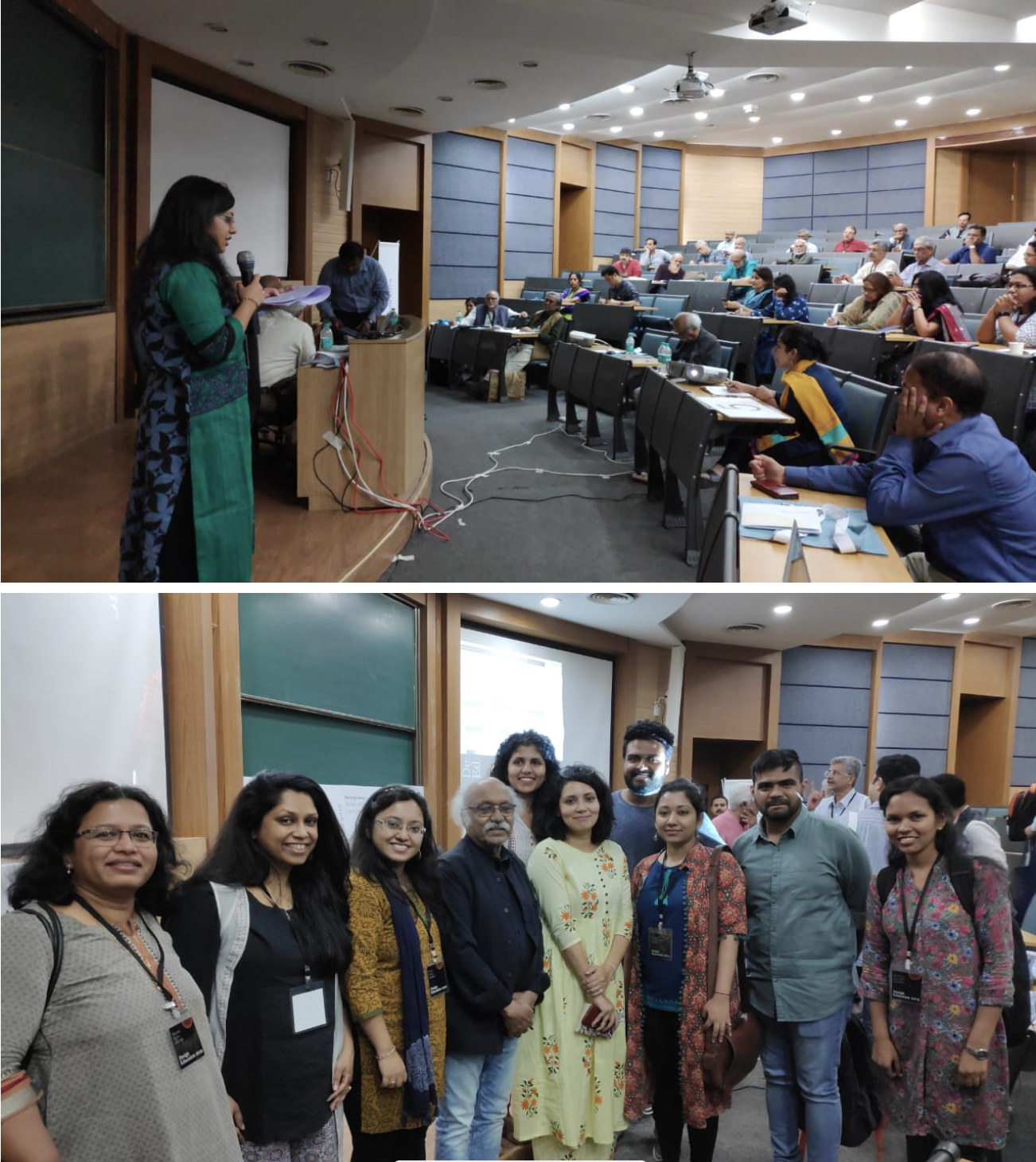
Design Education Symposium
IIT Bombay
Student Volunteer @ Design Education Symposium
Being the emcee of the event, I got to introduce and invite on the dice some of the pioneers in the field of Design. It was a great opportunity to interact with the professors from different design schools and knowing their school of thought.
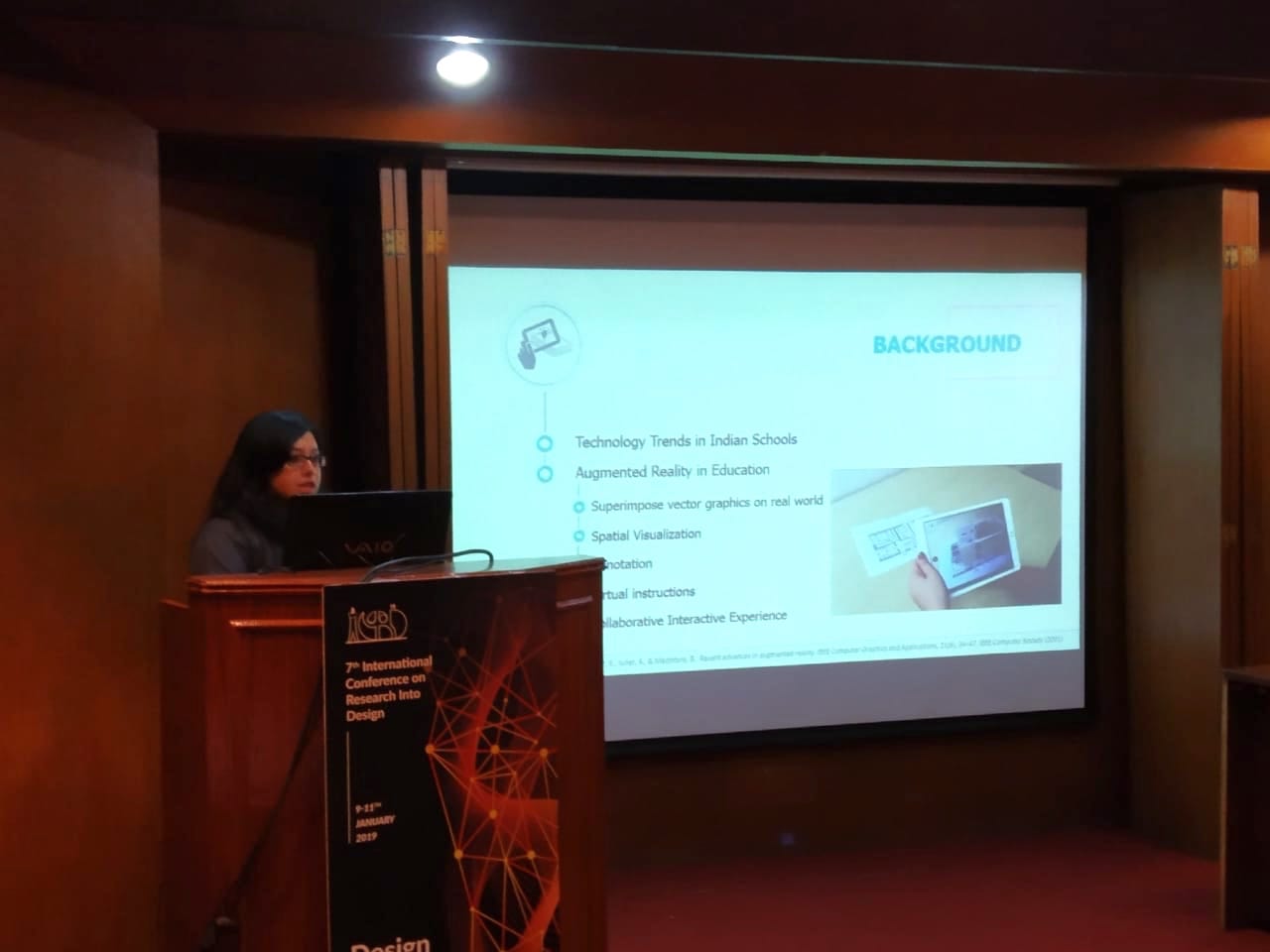
ICoRD 2019
IISc Bangalore
Paper Presentation @ ICoRD'19
It was a splendid experience of meeting people with diverse research areas in Design. I got to present a paper, interacted with professors from international institutes and had some amazing time with the young researchers from different Indian institutes.
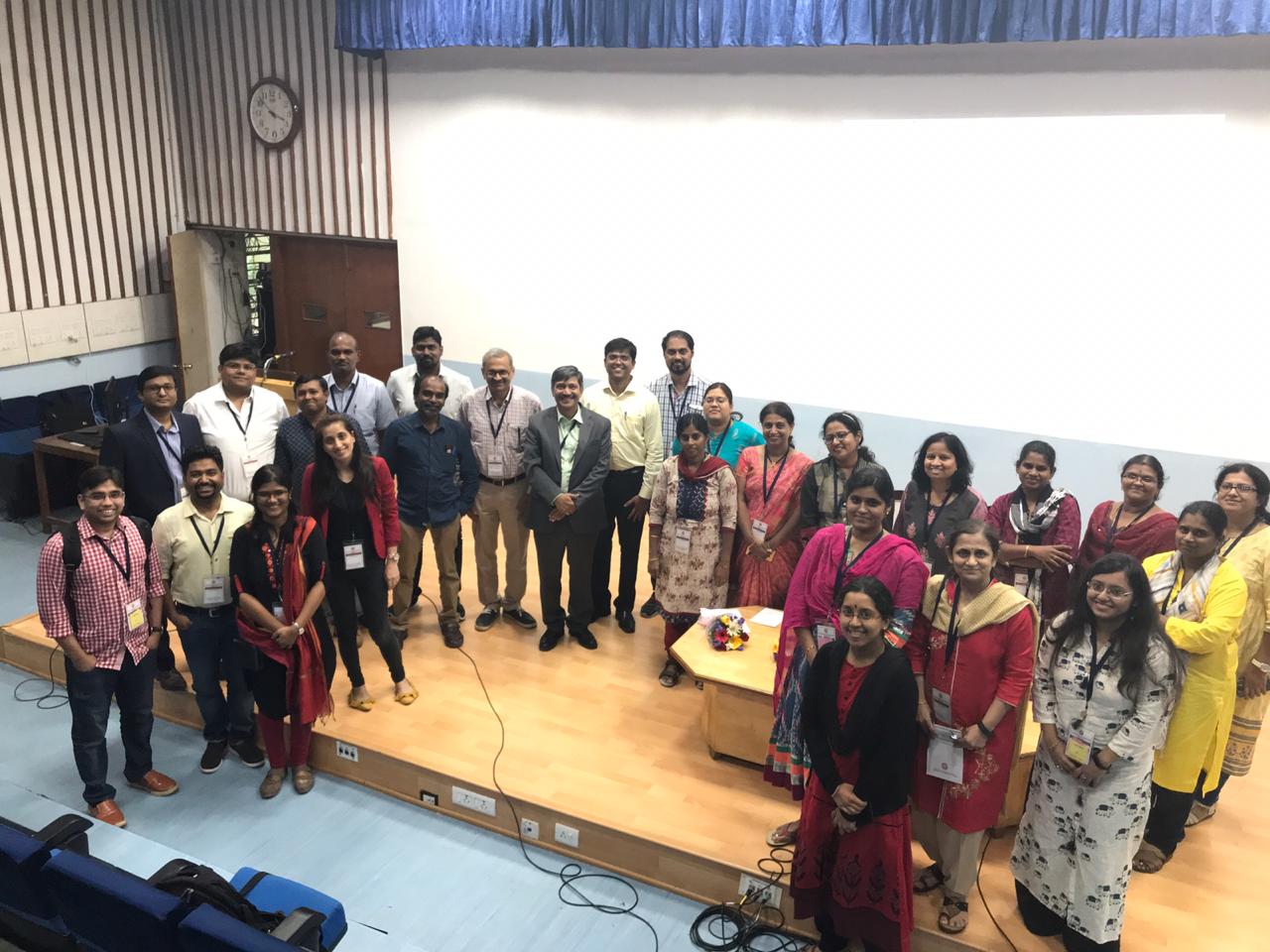
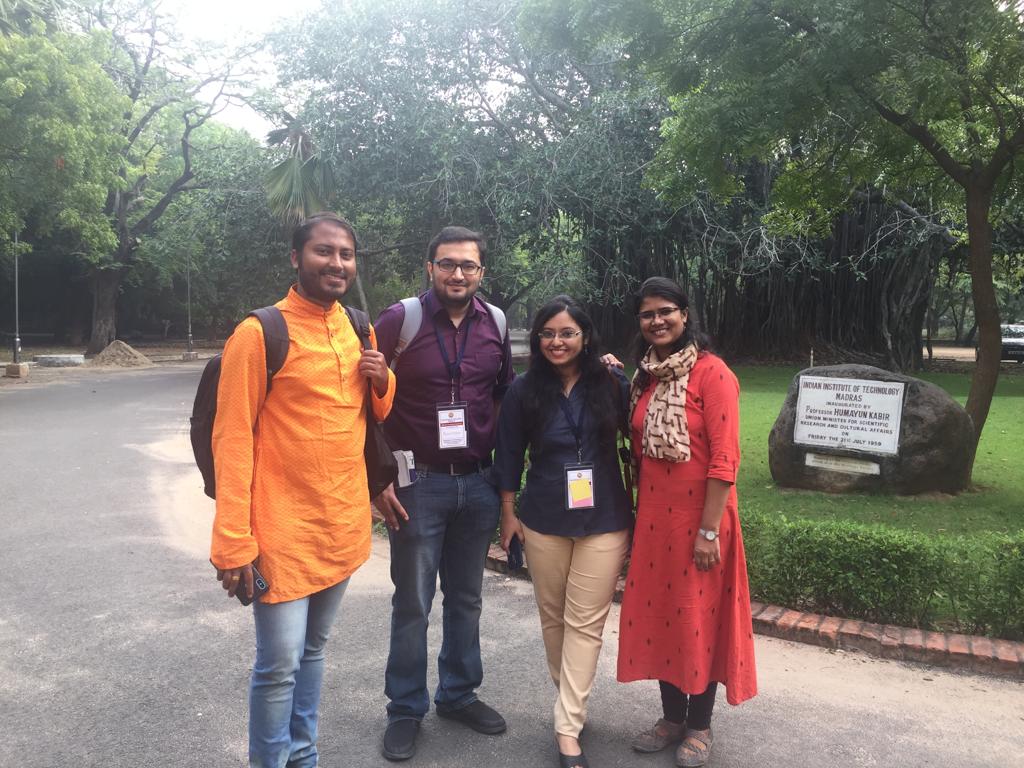
T4E 2018
IIT Madras
Paper Presentation @ T4E'18
This happened to be my first paper presentation in the journey of PhD. While exploring the campus with deers, stags and blackbucks, I enjoyed presenting a paper out of the two selected ones.
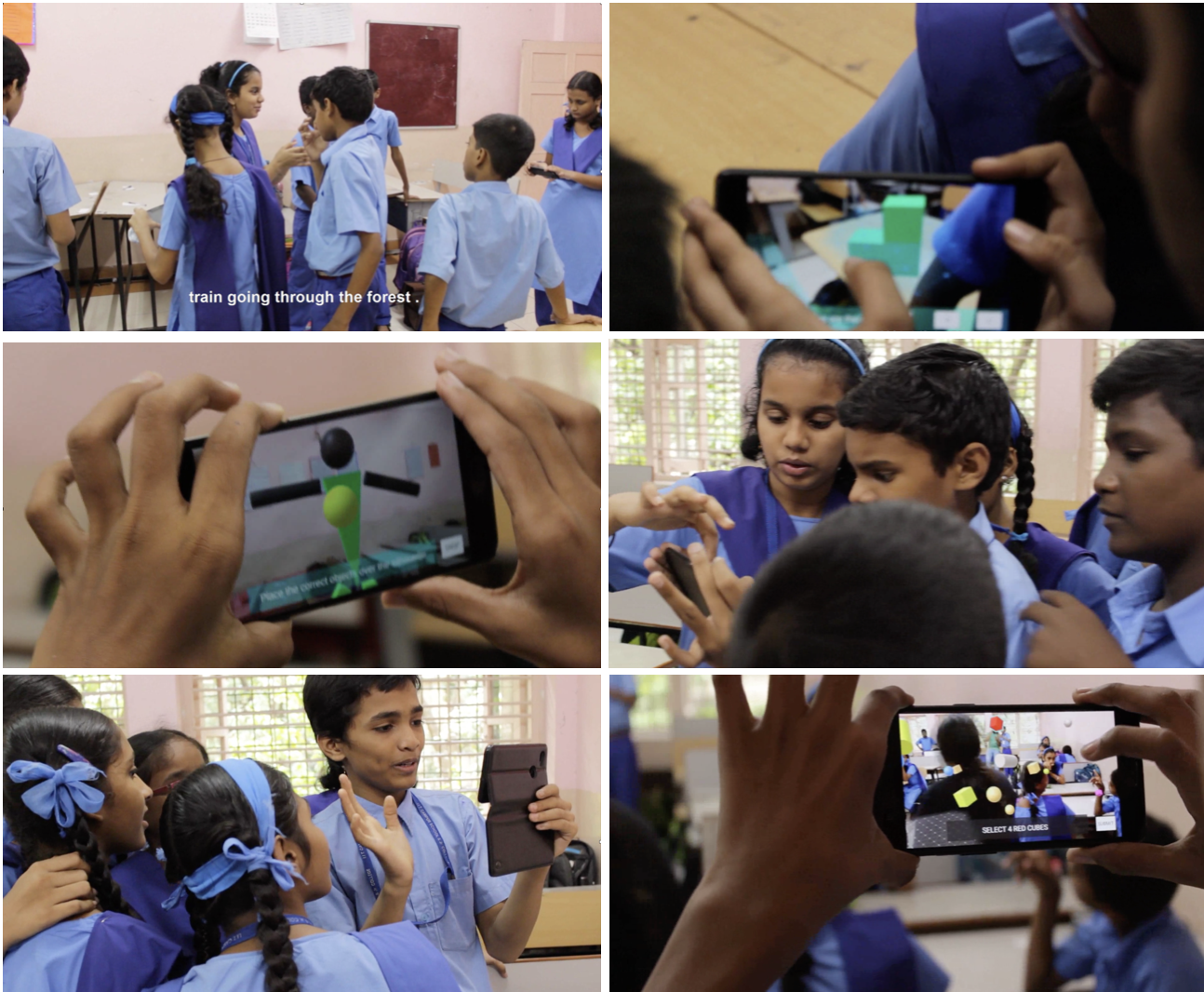
Field Study
Mumbai
Testing AR module on Visualising Solid Shapes
The research work involved the implementation of a module in AR on the topic of Visualising Solid Shapes. The app was tested with 7th grade students at a school in Mumbai. Thanks to Amarnath, Rishi and Suraj for being the supporting pillars with the execution of the study.
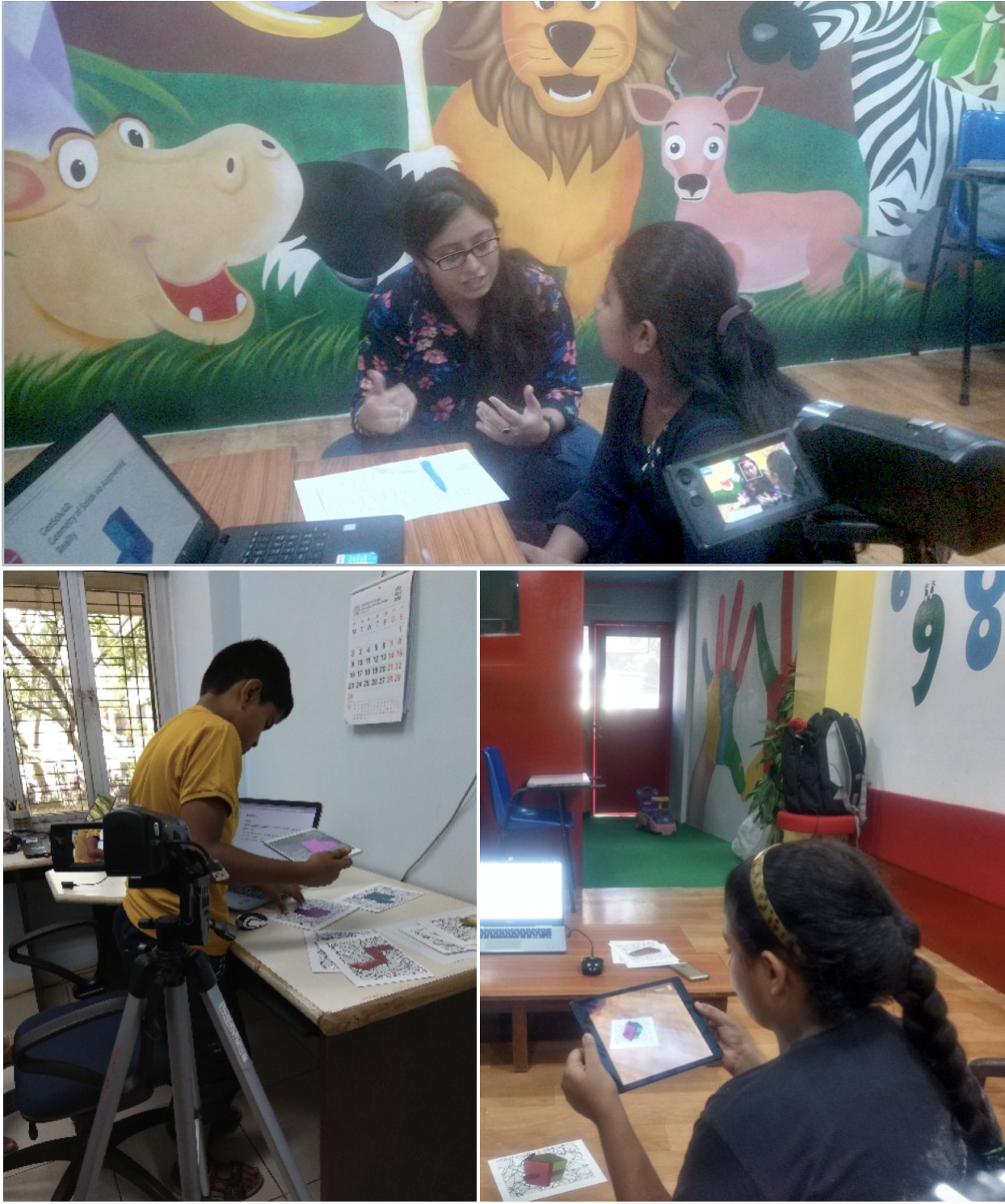
GeoSolvAR
Lab Study
Observing the Mental Rotation skills
I have been fortunate to be associated with the colleagues from the Interdisciplinary Programme on Educational Technology at IIT Bombay. As part of a course in their department, I along with the my team members Navneet, Rumana, Ulfa and Balraj tested a marker-based AR application with a few middle-grade students. The study was aimed at investigating the mental rotation ability, the interaction pattern and the usability of the AR app.
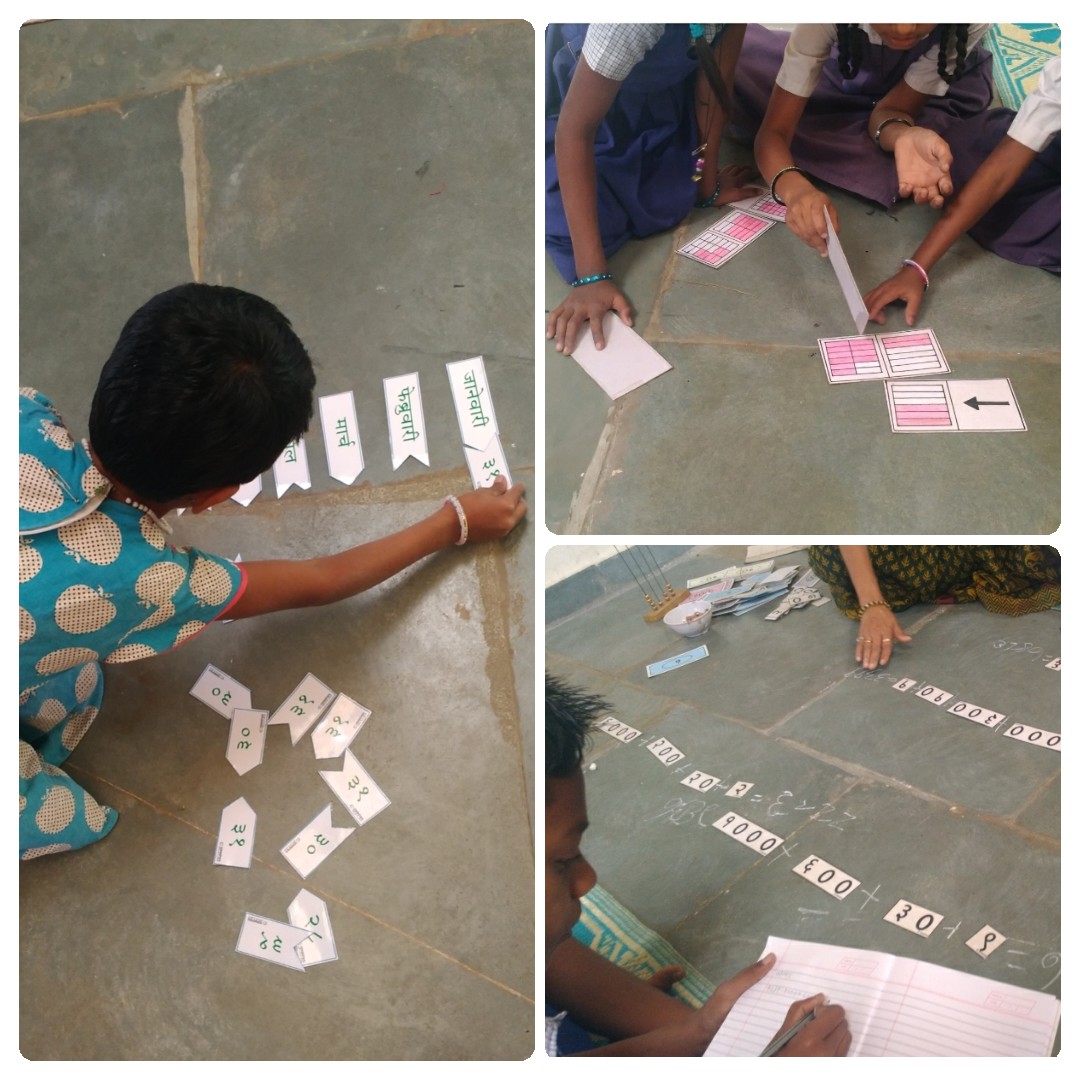
Field Study
Dahanu, Maharashtra
Witnessing Activity Based Learning
As part of primary field study, we went to observe the teaching methods and the role of technology in rural schools. There we came across the interesting implementation of the Activity Based Learning using various activity kits in one of the government schools in Dahanu, Maharashtra.